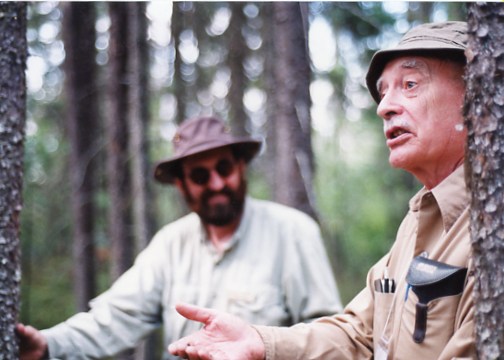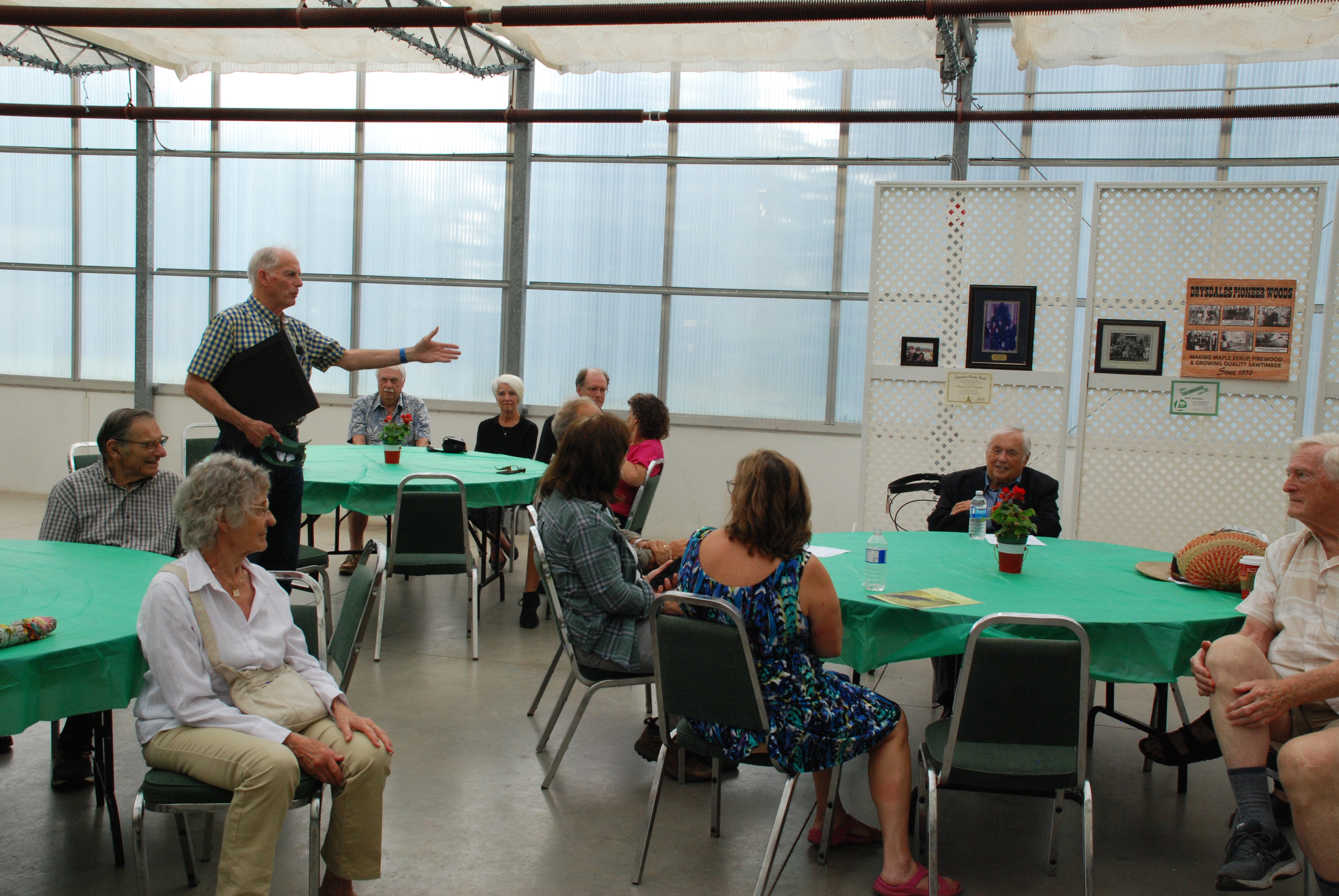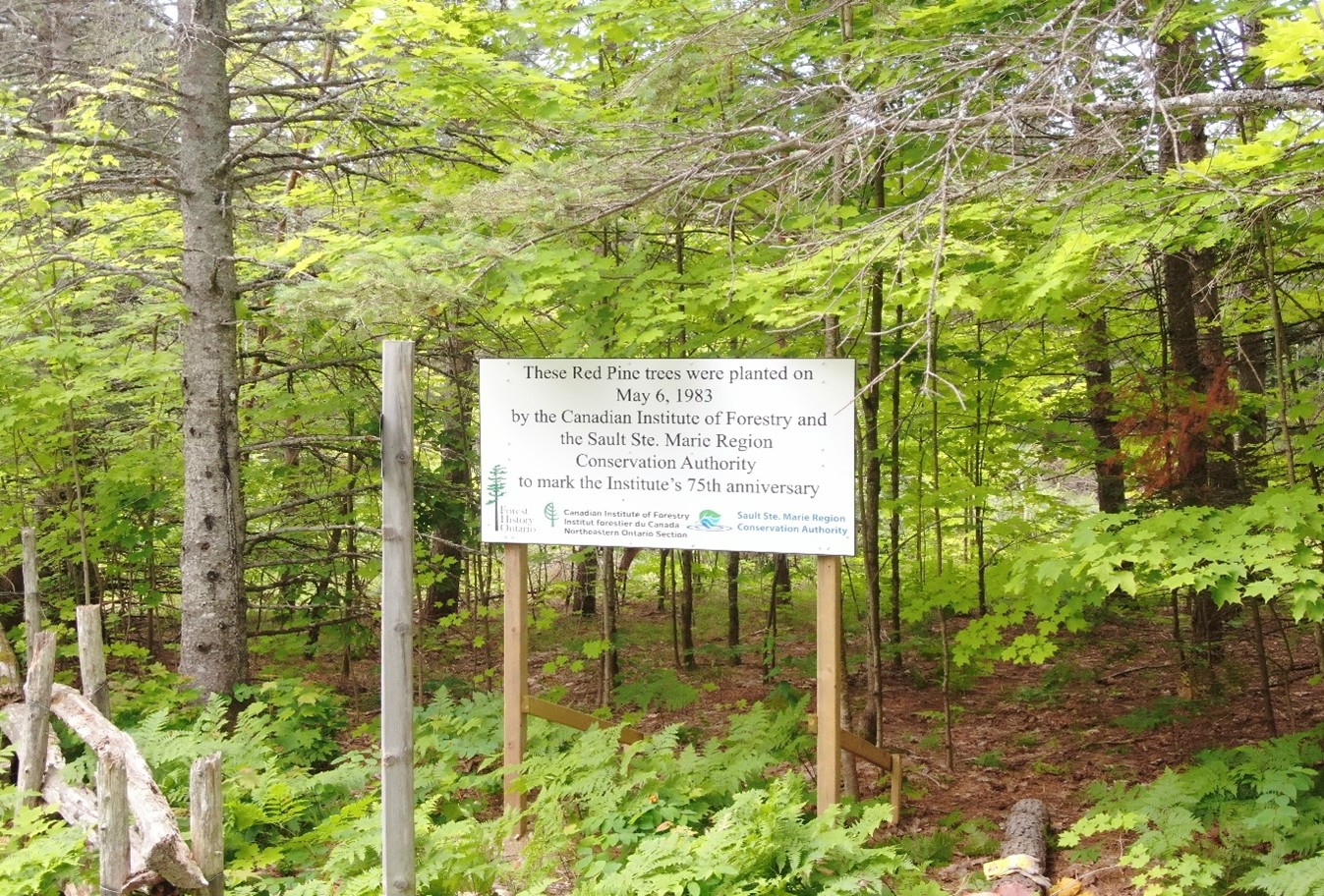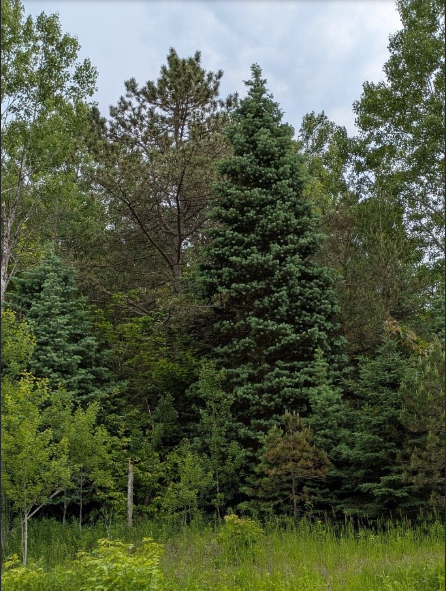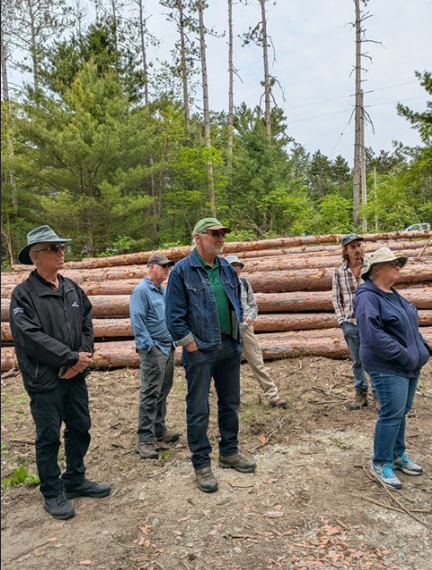News and Events
Discover a remarkable piece of Ontario’s forest history—one that sat untouched in an attic for nearly a century. Published in The Ontario Woodlander, this article by Art Robertson uncovers a long-forgotten scaling journal that documents the sheer scale and grit of logging operations along the North Shore in the late 1800s and early 1900s.
Explore the full story by clicking here: Art.pdf
From 1995 to1999 the KEY Foundation funded classroom teachers and administrators from across Canada as they attended a forest-management-information packed week in Thunder Bay hosted by Abitibi-Price and Avenor. Each of the five years the two companies hosted 24 to 30 teachers and administrators to a full seven-day in-depth look at Ontario industrial forest management. Included were four days of lectures and three days of tours including one to a Buchanan Brothers sawmill and the Avenor pulp and paper mill and a day in the bush with Avenor and another day with Abitibi-Price.
KEY, standing for Knowledge of the Environment for Youth, was a Canadian not-for-profit foundation that was financed by a group of seven different-industry associations, two other foundations, governments through Human Resources Development Canada and the Saskatchewan Green Plan plus twenty-five individual Canadian corporations including Abitibi-Price and Avenor.
KEY focused on, “Developing teacher training and classroom materials about current topics which relate to science, environmental science and social studies”. The objective that most helped KEY’s credibility with the teachers was summed up by Bob Killam, Executive Director of KEY as, “Our guiding focus at KEY is to develop balance, through speakers from many perspectives, when addressing a topic”.
Speakers at the Thunder Bay seminars were from forest industry companies, environmental activists, forestry consultants, 1st Nations, unions, Ministry of Natural Resources, Monsanto, Lakehead University, research scientists, and community groups.
Throughout the week the focus was on describing and viewing forest management as it was being practiced and responding to questions. After each year’s seminar based on teacher critiques the program for the next year was adjusted to better meet their needs. At the end of each tour teachers rated leaders on whether the tour was worthwhile, offered new information to them, it’s objectives were clear and met, would the information be helpful in their classroom, and would they recommend the presentation to other KEYsters?
Responses from teachers indicated KEY’s objective was met and their education needs were met. Most delegates followed through with personal contact via letters or phone calls after they returned home. The author of this paper remembers that after each seminar his letters sometimes filled three pages and often replied to questions that the sender didn’t feel comfortable asking where answers might be embarrassing or confidential. They received open and factual replies.
Today I look back at my involvement with Ken Armson and Neils Carl as we helped organize and participate in the KEY seminars, especially the field trips. The field trips were a highlight in my enjoyable career as a forest researcher, manager and communicator. The following quotes from delegates in their evaluations were common among those of Neils, who led Avenor’s tours, and of Ken and me who led Abitibi-Price’s tours, “I felt Mac answered all the questions that were raised. I felt he did so honestly and with integrity”, and “All (questions) handled extremely well by Mac and others (eg Ken Armson+ Avenor’s forester!)”.
Earlier this year, we lost an innovative and highly respected forester who was well known and respected in forestry, business and professional circles across the province. Doug was a founding supporter of Forest History Ontario (then the Forest History Society of Ontario) and engaged in a number of FHO activities. On a FHO field tour a few years ago he demonstrated his remarkable recall of projects and activities he was involved in decades earlier by regaling the tour with anecdotes and details of work done in the 1950s.
Doug was a caring family man, loyal and generous friend, and accomplished forester, farmer, entrepreneur and philanthropist, Doug left behind a legacy of kindness, generosity, success and inspiration that continues to enrich the lives of all those who knew him.
Doug recounted his career to his daughter Donna Crowley who then transcribed it. It provided valuable background for his Tree of Life Award celebration (April, 2023) from the Southern Ontario Section of the Canadian Institute of Forestry. A lightly edited version of that is provided as follows.
In 1944 Doug planted his first trees with his father at their Cookstown property and has planted trees every year since. In the fall of 1950, he started a 4-year program with the Faculty of Forestry at the University of Toronto and worked part time for Ross Grinnell with the Department of Lands and Forest throughout the school year. Over those 4 years of his undergraduate degree, he compiled County Forest inventory information from permanent sample plots.
In the summer of 1951 Doug joined the Department of Planning and Development and was the Party Chief mapping the height of land around watersheds for the Grand River (including the Speed River, Eramosa River and Nith River – tributaries of the Grand River). That summer his team also mapped the watershed for the Holland River. The aim of the mapping was to facilitate the establishment of the River Valley Conservation Authorities. That year Doug discovered a property in Ballantrae while working at his summer job mapping watersheds and seeing its value, promptly bought it.
The next summer, 1952, Doug was a field officer with the newly formed Ontario Christmas Tree Grower’s Association. In this role, Doug visited properties to inform owners of the suitability of their land to grow Christmas trees as a cash crop. In 1953 he worked (along with Bill Forman and Bob Staley) for the Ontario Department of Lands and Forests mapping and inventorying numerous county forest properties primarily in Simcoe County, York County, Ontario County and the Ganaraska watershed.
Doug graduated from U of T with his BscF in 1955 and continued his education starting a Master’s of Forest Economics studying the history of Forestry and the future of Forestry in Simcoe County. Fieldwork involved visiting all of the wood using industries (e.g., sawmills, crate building and furniture factories) in Simcoe County.
In the summer of 1956 Doug worked as an Assistant to Professor David P. Love (U of T, Faculty of Forestry) to determine the economic feasibility of acquiring sufficient wood annually to operate the Ontario Paper Company mill at Thorold, Ontario. This involved a survey of all forest properties within reasonable hauling distance to Thorold.
After successfully competing his Masters (MscF) in 1957 he was hired into the Department of Lands and Forests by Terk Bayly (at that time, Terk was the head of the Reforestation Branch) who went on to become Assistant Deputy Minister and then Deputy Minister of the Department of Lands and Forests. Terk hired Doug with the goal of having him eventually work at Queen’s Park, but recognized the importance of Doug having appropriate field experience to establish a positive relationship with the various field organizations in the industry. With that aim, Terk appointed Doug as Zone Forester for the Southern half of the Lake Simcoe District (all of Peel, York and Ontario Counties). Doug was based at Maple, Ontario and had direct management responsibility for York County Forest (11,000 acres), Ontario County Forest (5,000 acres) and the Metro Toronto and Region Conservation Authority Forest (10,000 acres). During the 2 years that Doug was Zone Forester, he added about 500 acres near Pefferlaw to the York County Forest.
After 2 years in the Lake Simcoe District Doug was moved to head office in 1959 starting first at the Downsview office (housed in the Department of Highways building at Hwy 401 and Keele Street). He shared an office with Dr. Walter Plonski and John Morawski – 2 newly acquired Polish foresters that provided Doug with wonderful learning experiences. Walter Plonski was a former Foresty professor in Poland and John Morawski was a District Manager of one of the largest forest districts in Poland before WWII. Art Herridge was Doug’s immediate supervisor.
In 1960 Doug was named Forest Economist and was moved to the Dep’t of Lands and Forests head office at Whitney Block, Queen’s Park. Lew Ringham was Doug’s immediate supervisor. Terk Bayly was the Chief of the Reforestation Branch on the timber side of things and J.A. (Steve) Brodie was the Chief of the Timber Branch. Doug met often with Brodie and Frank McDougal (Deputy Minister) and the Honourable Kelso Roberts newly appointed Minister of the Ontario Department of Lands and Forests. (Roberts had recently lost out to John Robarts in the race to become Premier of Ontario). One of the things Doug did was to compile the first-ever comprehensive directory of all the primary wood using industries in Ontario. This was very well received and useful to the industries themselves. He followed this with a second industry directory which included all the furniture factories. At that time, there were more than 50 furniture factories – it was a strong industry, employing more people than the automotive industry. Doug was tasked with writing a report on what the future of wood utilization might look like. Basically, it predicted a resurgence of lumber production (which had declined in the post white pine era) and the mechanization of all aspects of harvesting. It seems obvious now, but that is basically what eventually happened. Still working under Lew Ringham and Art Herridge, Doug was encouraged to establish a Forest Economics unit and recruited some very capable people into this unit. His first hire was Larry Lambert. Al Nausedas soon followed and over the next several years the unit grew to include Mike Innes, Winfred Fruhauf, Vern Simpson, Chuck Howard and others. Doug headed an in-depth analysis of all private forest land in Southern Ontario. This had never been done before... and
has never been done since. They started working on what eventually became the Algonquin Forest Authority.
Around 1971, Doug was made the Executive Coordinator of the Timber Sales Branch (basically the head of all timber activities) with the Ministry of Natural Resources. This role included forest management planning, timber licensing, timber scaling and collection of Crown dues. It also encompassed the Forest Economics section. Doug remained in this position until 1981. During this era, Doug oversaw the Crown Timber Act revision, doubling the rates for Crown Timber. The volume of wood harvested in Ontario was doubled from that of 1970. This included the modernization of 31 pulp mills, the establishment of wafer board industries, widespread mechanization of harvesting machines, tree-length logging (instead of short wood), and weigh scaling (instead of measuring individual logs). It also included the development of new sawing techniques that allowed 2x4s to be manufactured from logs with only a 5” top. By 1980, annual lumber production exceeded the maximum production achieved during the heyday of the early white pine era. Doug participated with a Canadian Delegation and spoke at the World Forestry Congress in Jakarta, Indonesia in 1978.
It was during the 1970s that the NDP party under Stephen Lewis tried to stop all logging in Algonquin Park. Doug felt strongly that this would be a disaster for several thousand employees of primarily wood using industries and destroy the economic base for dozens of towns and villages. To combat this threat, Doug was given responsibility for dealing with this situation.
In 1981, Doug was asked to take on the management of the Forest Research Organization. He was appointed the General Manager of the Ontario Tree Improvement and Forest Biomass Institute (OTIFBI) situated at a more than 100 acre property at Maple, Ontario with field offices located at Swan Lake in Algonquin Park, Sault Ste-Marie, and Thunder Bay. Staff totalled between 175 and 200 with about 20 PhDs among them. This included research in forest genetics, soils, forest site classification, the development of new inventory methods, and biotechnology. Externally, Doug was involved with the Union of Forest Research Organizations (UFRO) and participation with Dr. Louis Zsuffa (one of Canada’s
representatives) in the International Union of Forest Energy. While Doug was the General Manager, he co-chaired, with Jim Cayford (Regional Director, Canadian Forestry Service in Sault Ste Marie) the administration of approximately $2 million annually in external research carried out by others (e.g. universities and consultants).
Doug officially retired from public service in 1989. He was, however, asked to stay on the organizing committee for the UFRO conference in Montreal in 1990.
While modest about his accomplishments, Doug was Honoured Professional Award with the Ontario Professional Foresters Association, Tree of Life award from the Canadian Institute of Forestry, Adjunct Professor (Faculty of Forestry, U of T) and Forestry Lecturer (Guelph University).
Drysdale Forest Farms was established as a family business in 1945 as a partnership with Doug and his father, Reg Drysdale. Doug was instrumental in the convincing his father in the early 1960s to open up their Ballantrae farm to become one of the first Christmas Tree farms in Canada to have families come to choose and cut their own tree. This family business rapidly expanded to 3 locations (Ballantrae, Cookstown and Essa). In 1984, Drysdale Forest Farms was replaced by Drysdale Tree Farms, Ltd. This family business continues to thrive and expand under the leadership of Doug’s son, Doug Jr., and his children, Andrew Drysdale and Serena Drysdale in key supporting roles.
Doug believed that he had been blessed to have been given chances to work with terrific mentors throughout his Forestry career and also been given opportunities and responsibilities that promoted his growth as professional forester.
Doug’s obituary below.
DRYSDALE, Douglas Paul - Obituary - Barrie - Barrie News
Career history provided by Doug Drysdale and transcribed by daughter Donna Crowley.
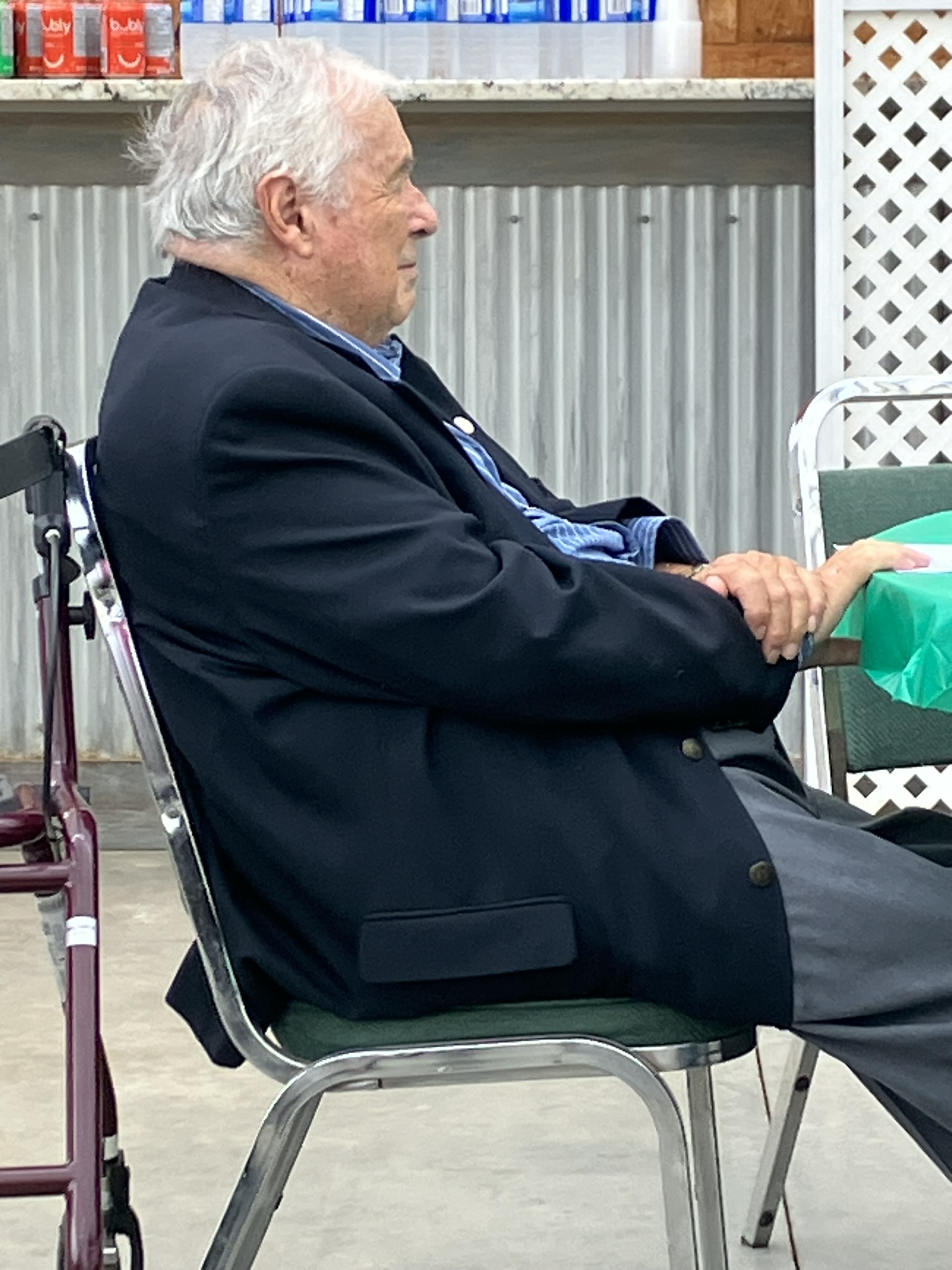
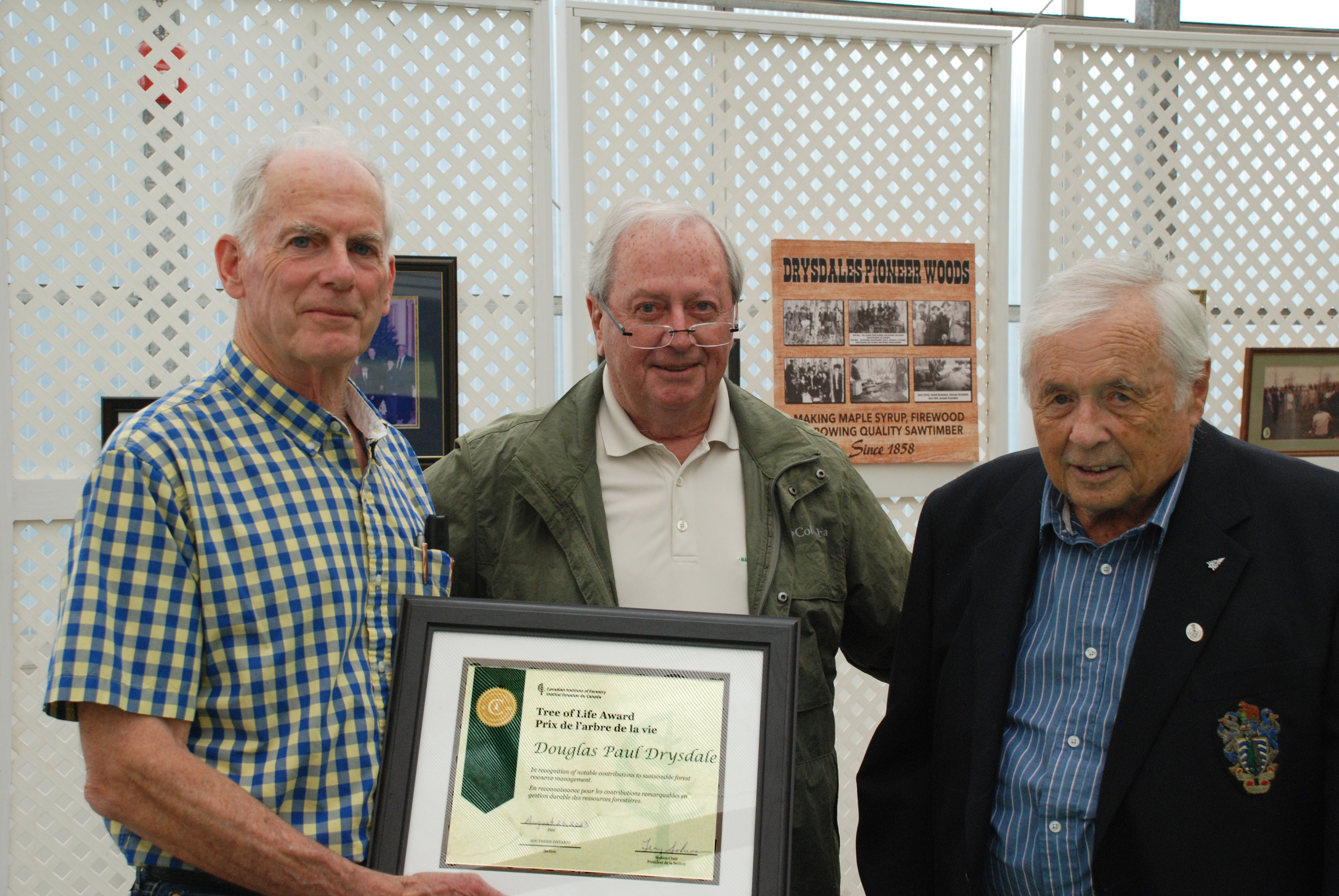
On October 3rd The Canadian Institute of Forestry – Northeastern Ontario Section in partnership with the Sault Ste Marie Conservation Authority hosted a celebration event to mark the 30th anniversary which included over fifty students from the Algoma District School Board and representatives of 14 local organizations.
Guy Smith, a council member with CIF, in Sault Ste Marie was recognized of for his 30 years of service to Algoma Envirothon. He received the National Conservation Foundation Envirothon Hall of Fame Award and the Maple Leaves Forever Ontario Envirothon Award from Forests Canada. In his remarks he commented on the hundreds of young people who have participated with energy and enthusiasm over the years and importantly increased their potential to shape the future of natural resource management and environmental science.
Recently Forest History Ontario members partnering with local CIF, have worked to revitalise the 1983 CIF Anniversary Plantation by installing interpretive signs that offer basic forest management information for students and the broader public to enjoy. These signs and some site maintenance activity to improve accessability, prepared the site for the very successful Envirothon program and celebration event.
On June 19, at its Annual General Meeting, the CBHC was pleased to open a new exhibit at its museum in Sault Ste Marie. It’s entitled, Not a Job but a Calling: Rangers, Game Wardens and the Ontario Forest Ranger School, was introduced and officially opened by CBHC Jamie Hilsinger Executive Director. Katie Dalton, Regional Enforcement Manager MNR, noted that the Ministry of Natural Resources has a long history of protecting Ontario’s Natural Resources spoke about how the exhibit brings this long story of conservation to life. Don Weltz, represneted Retired Conservation Officers of Ontario. Will Samis who was both a Forest Ranger and a Conservation Officer, and Jim Baker who is also a graduate of the Ranger School spoke on behalf of Ranger School Alumni.
Each display tells the story of the vital contribution of Game Wardens (Conservation Officers) and Forest Rangers in protecting and managing Ontario’s Natural Resources. Their efforts, often from the right seat of many of the aircraft in the museum’s collection, and the important contribution of the Ontario Forest Ranger School (1952-1967), in training students for these positions, are presented impressively in five four-sided kiosks. They offer written material, numerous photographs and many other interesting memorabilia items recalling the early history and development of this essential work in Ontario.
The exhibit was developed with the able leadership of CBHC’s curator Mary Collier and members of the Ontario Conservations Officers Association (and retired members) and The Ontario Forest Ranger School Alumni. In the project’s early planning days Forest History Ontario was also supportive of the emerging discussions and worked with the parties to assist where possible.
Several retired Conservation Officers and Forest Rangers took the time to attend and visit with former colleagues. All were impressed with the exhibit and happy that the material was assembled and now telling their story. The display will be on view at the Museum through 2025 and available afterwards for loan to other museums across the Province.
On June 5, 2025, approximately 65 forest community minded folks gathered in Sault Ste Marie to celebrate the 25th anniversary of the establishment of MNR Millennium Forest there, in the year 2000. This forest is a small representation of the Boreal and Great Lakes St Lawrence forests, now growing in an urban setting. It is located at the Roberta Bondar Building which is the corporate office for Ministry of Natural Resources Forestry staff.
The Millennium Forest project was the idea of Peter Gagnon, a longtime employee of MNR. He thought it appropriate that a portion of the original grass lawns in front of the Bondar Building be transformed into a forested area representing the Crown land forests managed by the MNR. With his background and experience in forest management he researched other work done to transform a lawn into a representation of forest landscape. With the help of many volunteers Peter’s concept put down roots and after 25 years, it thrives as mini ecosystem typical of Boreal and Great Lakes St Lawrence Forests, so important in Ontario.
Bill Thornton, former Deputy Minister of MNR and Director of the Provincial Forest Management Branch at the time, noted in his remarks the appropriateness of community members and organizations coming together here, to support the celebration on World Environment Day. He also spoke about the turn of the millennium as a time of some excitement, in celebrating such a rare milestone along with perhaps growing uncertainty about what the future might hold, especially with respect to the long-term well-being of the planet. The focus of those working in forest management and all those interested in the many values the forest brings to us all was then and continues to be, long term sustainability. Pausing for even a short time to recognize the effort that was put into establishing this landscape and the value it brings to the site today is confirmation of the commitment all of us should continue to carry forward.
The idea for an anniversary celebration was put forward by CIF and FHO member Frank Kennedy and he along with committee members from MNR, CIF NEOS and FHO, including Megan Smith, who chaired the group, Adrianna Pacitto, Eric Wainio, Bill Thornton, Peter Gagnon and Fraser Dunn, organized the event.
Many other partners joined in and supported the project work in 2000. They include Sault Ste Marie Golf and Country Club, Algoma Forest Coalition, Avery Construction, RM Moore Public School, Sault Ste Marie Airport Corporation, Clean North, Ontario Reality Corporation and Towland Hewitson. Their efforts were fundamental to the project’s success.
Today, FHO is pleased to have participated in the ceremony to recognize the SSM Millennium Forest which presents an important reminder of the prominence and importance of forest resources in Ontario and at the same time provides, pleasant and valuable urban green space for people to visit and enjoy.
A 2021 British film called The Dig told the true and fascinating story of an earthen mound in a lady’s field in Suffolk, England, in 1939. It turned out that the unremarkable mound yielded an extraordinary find - an early, perfectly preserved Anglo Saxon ship, dating from somewhere around 600 AD. The film, opined one critic, was “serious, intellectually committed, and emotionally piercing”.
There is an unremarkable earthen mound in the middle of the field on our family property too, in Horton Township, not far from Renfrew, Ontario. I don’t think it contains an Anglo Saxon ship. In fact, I don’t think it contains anything at all. And I’m not sure that anyone will ever dig it up or commit to doing anything serious, intellectual or emotionally piercing with it.
Nevertheless, I do enjoy imagining a boat of some kind running aground here back in the Wisconsinan Ice Age while cruising the Champlain Sea, about 10,000 years ago. Lousy luck for the captain and crew of the boat, I suppose, but it will make a great story for my two grandchildren, at least until they figure out that I am prone to flights of unlikely fancy.
There is more recent (and more credible) history on and around our wedge-shaped property. The long side of the triangle is bounded by the Bonnechere River. The First Chute, one of five small waterfalls on the river, is 3 km. downstream from us. The Second Chute, about 7 km. upstream, became the centre of the Town of Renfrew in 1895.
Our frontage on the Bonnechere is very peaceful. I built a sturdy bench there, and it is a wonderful place just to sit and enjoy tranquility. It wasn’t always that way. In ages gone by the First Chute was a gathering place for First Nations. Surely the Algonquins of the day would have paddled upstream for fishing, hunting, or like us, just to enjoy their pristine surroundings. Champlain may have as well on his voyages of discovery up the Ottawa River (let’s start a rumour!).
In the spring months of the 1860s and 1870s, scruffy, tired and probably wet log drivers would have been happy as they passed the spot where our bench now sits: one more obstacle at the First Chute and they would be into the Ottawa River, not far from the Chenaux sorting gap where squared logs were sorted, boomed and then shipped to Quebec City for transport to the British military. For the log drivers, it was the end of an arduous and dangerous journey that had started weeks earlier in Algonquin Park.
Horton Township was named after R.J. Wilmot Horton, a British MP, knighted in 1831, who led an initiative to encourage emigration from Scotland and Ireland to Horton Township in 1823. That may explain the unique delivery of the English language by a true “Valley Boy”. Land clearing and farming grew with the need for food, horses and other supplies for the burgeoning logging industry. In 1871, a corner of our property was bisected by the Canada Central Railway, precursor to the Canadian Pacific mainline. More than a century later, we enjoyed taking our kids to the tracks when a train went by, hoping for, and usually receiving, a honk.
The original house, built in 1879, was made from hand-squared chinked logs, with cedar shakes on the roof. Over the decades that followed, a new kitchen, a laundry room, a woodshed and two verandas were tacked on to the original log structure. Each has sagged and shifted in its own unique way, possibly as a consequence of being shaken by every passing train for over 100 years, with the result that there is not a level floor or a true 90 degree angle to be found anywhere in the building.
A barn and several outbuildings were added nearby. None of them were particularly square either.
The property changed ownership twice before it was acquired in 1923 by a CPR section worker and farmer. He and his wife raised four children there, initially with no running water, no electricity (until 1960), and only wood heat.
When he passed away in 1968 the property changed hands briefly until my parents bought it in 1974.
My mother and father came to Canada in 1949 as refugees from post-war Europe. Like many thousands of others, they carved out a new beginning, my father as a labourer in the underground Toburn mine in Kirkland Lake, a small bustling town where my brother was born. My multilingual mother served as an interpreter, and occasionally as a referee, for the many languages and cultures that had been thrust together in the rough-and-tumble frontier of Northern Ontario.
Already then, they dreamt of buying a property of their own as a family gathering place, re-creating cherished childhood memories. Sadly, my mother died in 1966, a casualty of cancer, and never saw the dream come true. But in 1974, my father did. After a 25 year journey from Kirkland Lake to South Porcupine, Blind River (my birthplace), Thetford Mines, Fredericton, southern Peru, and the Indonesian province of Irian Jaya, he and my step-mother settled in Horton Township. They were “home”.
The year after my parents moved to Horton, I enrolled in the forest technician program at Algonquin College in Pembroke. At the time, I was attracted by the idea that forestry was about riding a horse and wearing a uniform.
It didn’t take long to find out that there might be more to it than that:
About two weeks into my first term at Algonquin, a friend, my brother and I headed into the woods looking for two tall straight black spruce trees, which my friend needed as masts for his sailboat. Flush with my budding knowledge of trees, I led them to the back end of the property, and proudly pointed to two 40 foot tall, straight, and very heavy black spruce trees. We cut them down, muscled them out on our backs, peeled them, and set them up on sawhorses to dry. We were very tired when we finished.
About a month later, as tree identification training was progressing at school, I learned to my chagrin that we had in fact cut two balsam fir trees instead of two black spruce trees. Balsam fir trees without a doubt are the worst possible trees on the planet for boat masts.
We never did find any black spruce on the property. There are none. I still struggle with tree identification, and I still hate balsam fir.
I soon forgot about horses and uniforms. Many more “life lessons” followed, each one helping me thrive in the real world of forestry for the next 30 years.
I, like my parents, shared the dream of a family gathering place. That dream came true for my wife Susie and I too, via moves to Thunder Bay, Chapleau, Cochrane, Mattawa and Ottawa. We built our house on the property in 2007 and have been “home” ever since.
We have trails cut throughout the property. Every year I plant a few hundred trees, trying to re-establish mixed stands with a higher proportion of white pine and white and Norway spruce. Plantations of white spruce established under the Woodlands Improvement Act in the late 1960s have been thinned and pruned. Naturally occurring young red and bur oaks occur naturally and are “encouraged” to grow straight. There is lots of cedar, aspen and, yes, balsam fir. We tap our few sugar maples every spring.
Our highly technical forest management strategy is to make the property look loved. For the most part, we are succeeding.
Every year at New Year’s, friends, aunts, uncles, cousins and a growing gaggle of kids gather to celebrate each other, our family, and this special family gathering place. This year, for the 50th anniversary, our traditional huge bonfire was by far the biggest and bestest ever. We toast the legacy of our parents in bringing us together here.
In 2025, the log drives on the Bonnechere have long since been replaced by migrating ducks and geese. Deer, muskrats, occasional otters and beavers forage among the big, white pines quietly lining the riverbank.
The fields where the sheep used to graze have grown into many different kinds of colorful wild grasses. I can’t identify any of them. Butterflies can, and they abound.
The CPR tracks have been gone for over a decade. We still miss the train honk. But like the train engineers before them, people who go by on the recreation trail that replaced the tracks, whether walking or riding on bikes, ATVs or snowmobiles, usually offer a friendly wave.
The crooked, creaky old house, still standing after all these decades, should really be knocked over for health and safety reasons. My brother and I can’t quite bring ourselves to get it done.
And what of the unremarkable mound in the field? Might there be a ship in there after all?
No.
But perhaps our family's grandchildren will one day take their children to the earthen mound and dig a hole in it, looking for fanciful treasure. Maybe they will find the (very small) ship that I will have buried there. And then maybe their parents will tell them a story …
It was a gorgeous spring day with enough sun to keep you comfortable and just enough breeze to keep the bugs at bay. The 6th FHO forestry tour attracted a record 40 attendees and made for a full bus of enthusiastic history buffs. It should be noted that apart from tour director Terry Schwan the only other tour member who has joined all six tours is dedicated history buff, Ken Reese. The group assembled at the Museum of Dufferin in Mulmur and generally followed a 1939 field day sponsored by the Counties of Grey and Dufferin with the goal of inspecting various forest plantings in the two Counties.
The FHO tour series, aptly named the Rewards of Planting Trees, this time in Dufferin County, explores the natural and planted forests across southern Ontario learning about their origins, history, current management and future plans. By 1900 much of Dufferin County’s Forest was cleared for agriculture and with the loss of tree cover not only were winter jobs for farmers lost but the light soils degraded making even farming very difficult. In the early 1900s land reclamation began and gradually more properties were returned to forest. In 1993 the County decided to commission a forest management plan for their forest holdings and a couple of years later recruited a full-time permanent County Forest Manager, Caroline Mach, the first in Ontario. Today, the Dufferin County Forest covers an area of just over 1,000 hectares.
The first stop was at the Main Tract for introductions and to view a Centennial Year (1967) planting. This now 53-year-old plantation was planted by a young Greg Greer when he just started out with the Department of Lands and Forests.
The second stop was at the Simmons Tract named after one of the recent owners, John F. Simmons, District Forester for the Lake Simcoe District. Simmons' colleague, forest researcher, Andrew Leslie established a very species diverse collection of forest parcels in the area and tested a number of fir species as Christmas tree options. A most interesting feature is the very healthy specimens of White Fir (Abies concolor) which is native to western US but also found in western Canada.
Concolor Fir...Simmons Tract
Red Pine Poles...Randwick Tract
The next stop was the Randwick Tract which was almost entirely Red Pine plantations, but a recent addition was a small planting of Butternut whose parentage has shown some signs of resistance to canker. Interestingly in the spring of this year an emergency thinning was undertaken to harvest candidate Red Pine trees to replenish local supplies of utility poles following the devastating ice storm in March 2025.
The next stop, the Little Tract, again named after an original owner, was as close as one could imagine to being classified as ‘old growth’ given tree sizes, ages, composition and understory vegetation. Interestingly, in the 1990s over 35 American Chestnuts were planted in the tract and by all appearances were doing very well. Native American Chestnut whose primary range was in the eastern United States but also southern Ontario was almost entirely eradicated due to an invasive blight.
The next stop, the Thomson property, provided a backdrop to the story of the Thomson/Somerville families whose lineage in the area goes back at least four generations and a legacy of those years of determination and very hard work is the Somerville Nurseries Inc headquartered in nearby Everett. We were graciously welcomed to this property by John Thomson, patriarch of this magnificent hardwood property that has been carefully managed by Greg Greer for decades.
After a very hefty lunch in nearby Simcoe County at the Earl Rowe Provincial Park the group continued on to visit the Beattie Pinery which is now a Provincial Nature Reserve. It is one of the most mature, least disturbed, and healthiest White Pine, Red Pine, and Sugar Maple upland forests on the Essa Flats lies. This 68 hectare forest contains many white pine well over 100 years of age and is considered to be rare to uncommon in Ontario south of the Canadian Shield.
The last stop of the day was back to the Main Tract north of Mansfield. This was the first property bought by the County in 1930 and is 606 ha is by far the largest. There are numerous hiking trails through the maple-oak and pine plantations with active forest management. But its history includes a relieve camp for young men through the thirties and a young offenders detention camp from the 1970’s to the early 1990’s. These young men learned forestry skills as well as life skills.
After a full day and much seen and learned the group returned to the Museum of Dufferin at 4:00PM with all in agreement that this had been a very educational and entertaining day spent in the woods…and the bus!
Much of the credit for spearheading this tour goes to Terry Schwan, dedicated forester and history buff (also an FHO Board member). Excellent guidance, historical information and anecdotes and advice provided by Dufferin County Forester Kevin Predon, recently retired County Forester Caroline Mach and local forestry consultant and keeper of vast stores local knowledge, Greg Greer.
Forest History Ontario is particularly grateful for the generous financial support from the County of Dufferin, without which this tour would not have been possible.
It was announced that the 7th field tour is being planned for Simcoe County in 2026, so stay tuned.
Jim Farrell (borrowing generously from Terry Schwan’s tour guide)
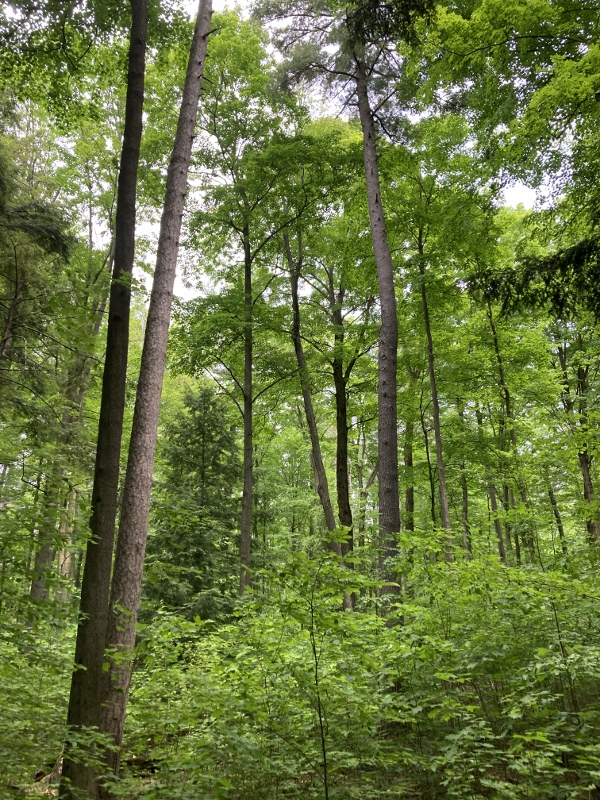
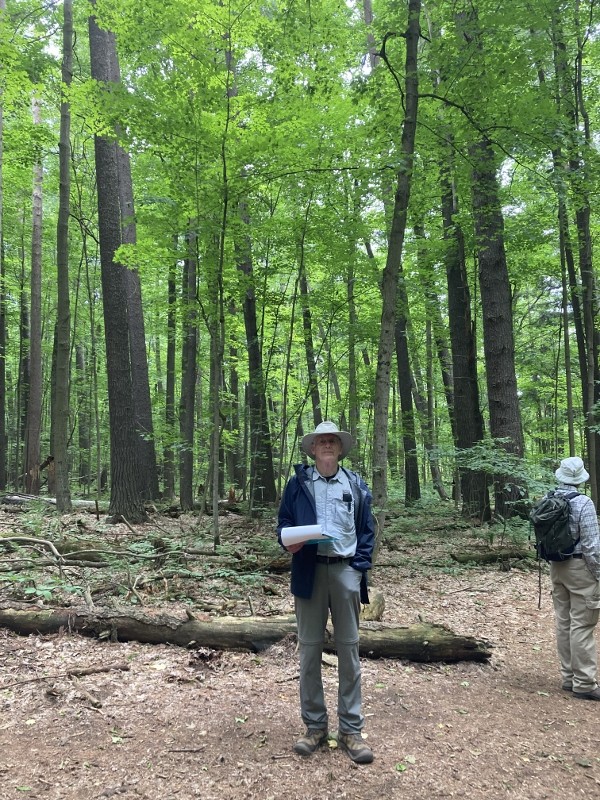
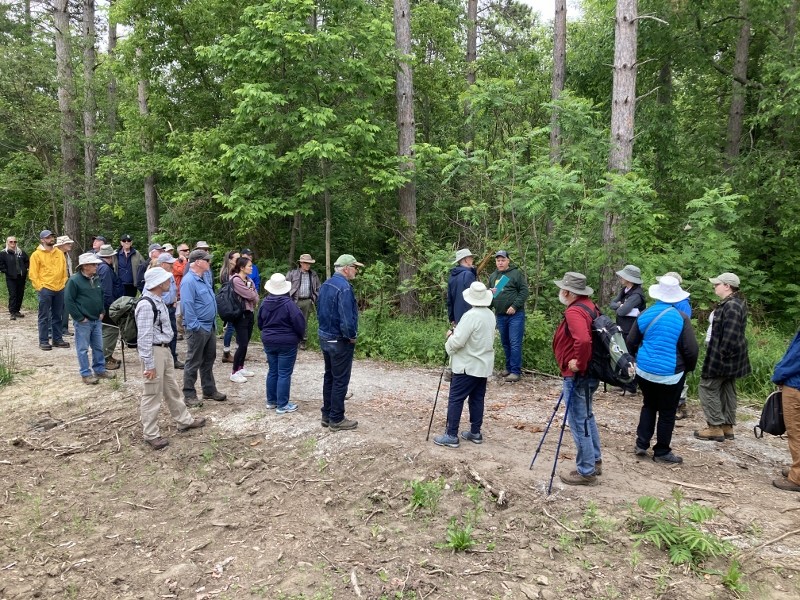
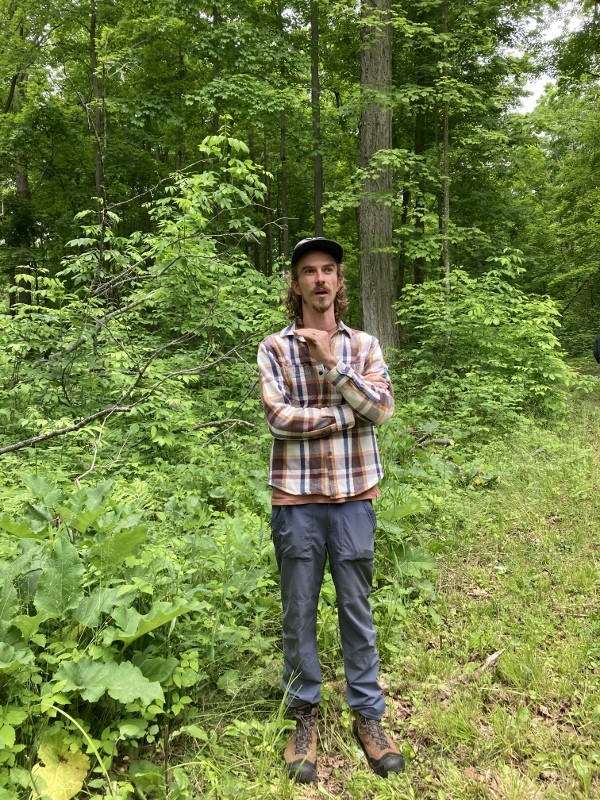
James Somerville
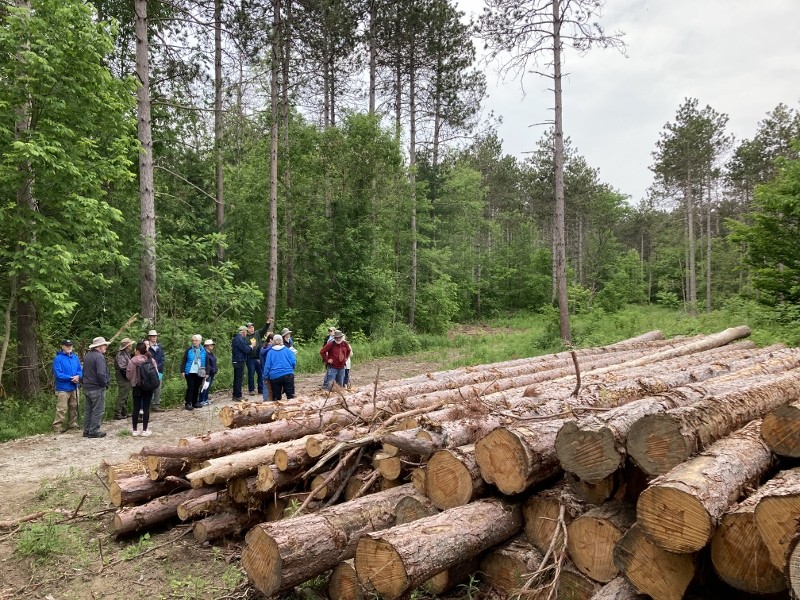
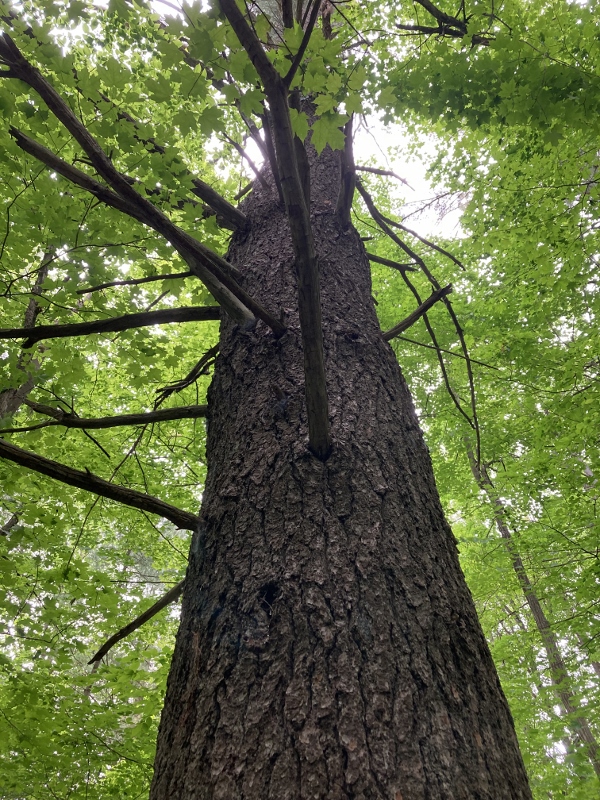
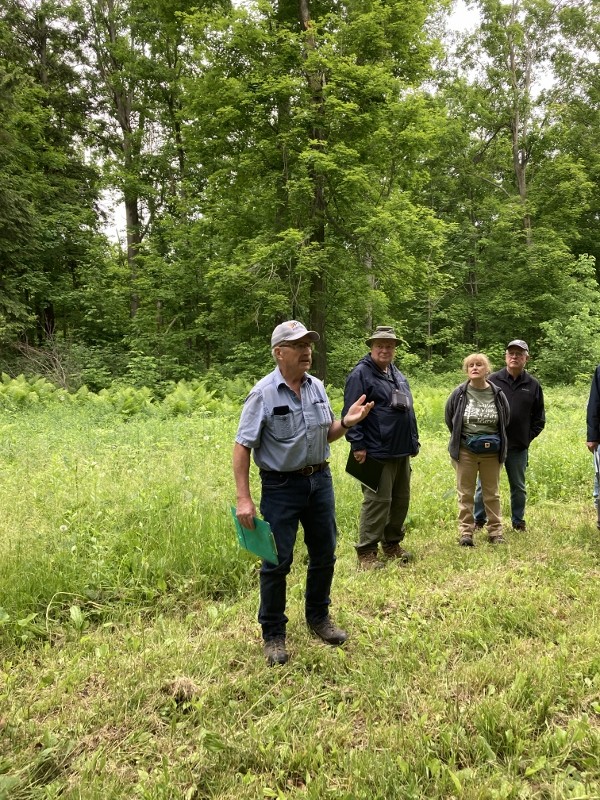
Greg Greer
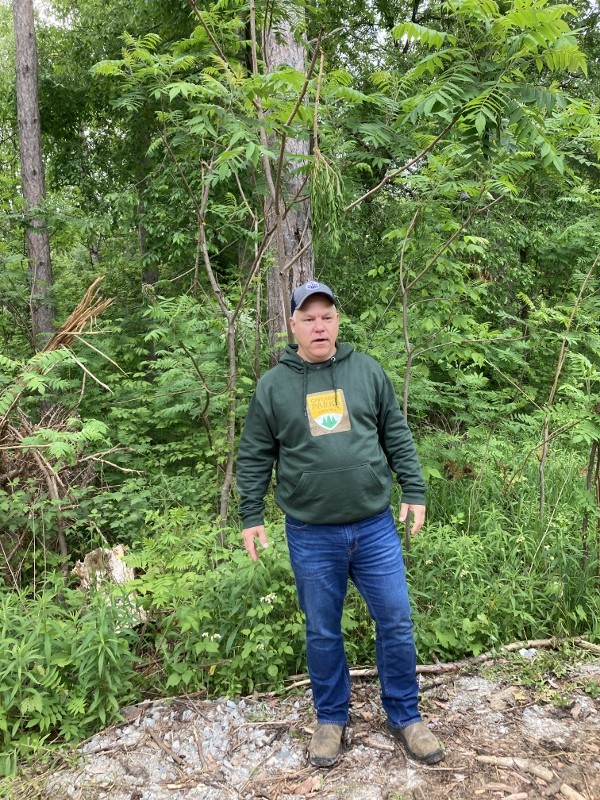
Kevin Predon
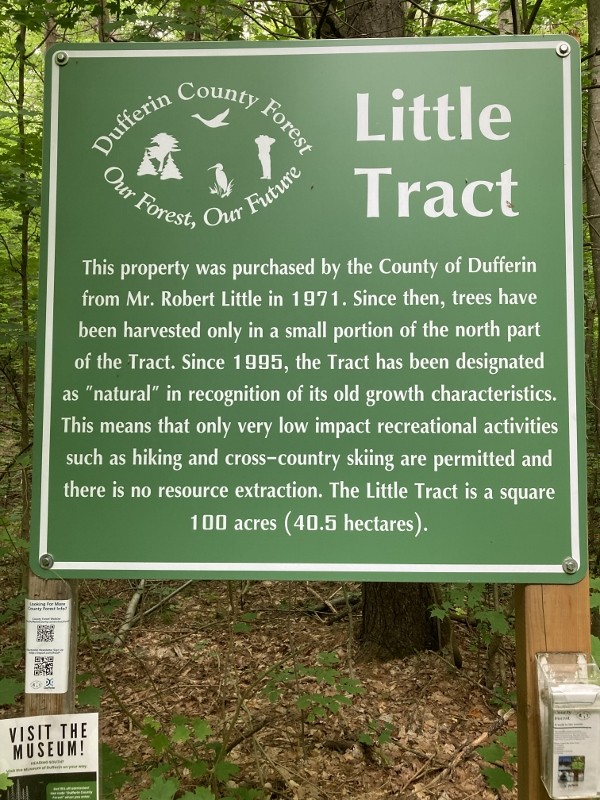
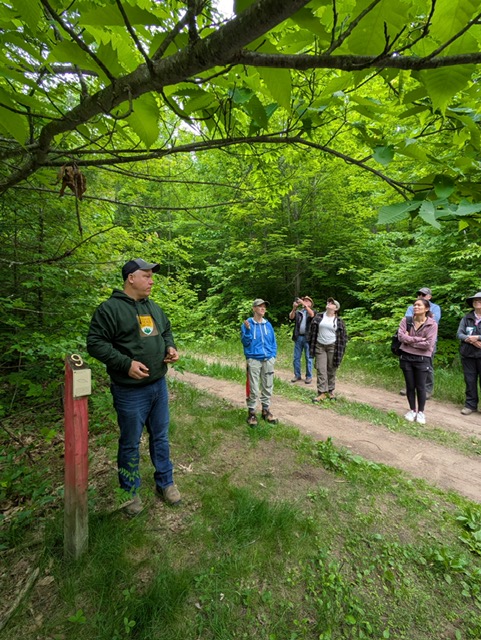
Sweet Chestnut
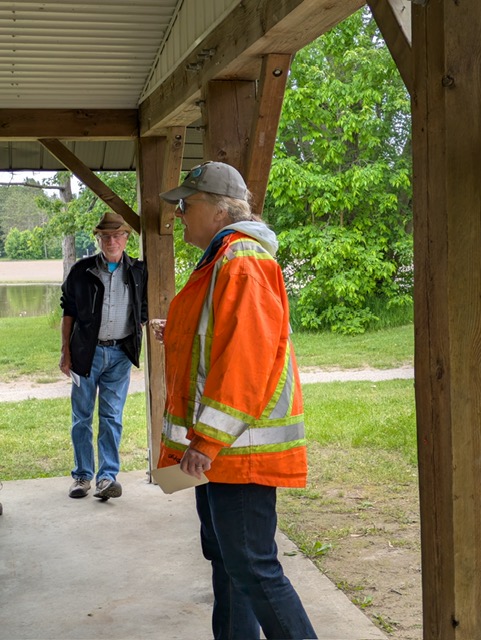
Jim Farrell and Caroline Mach
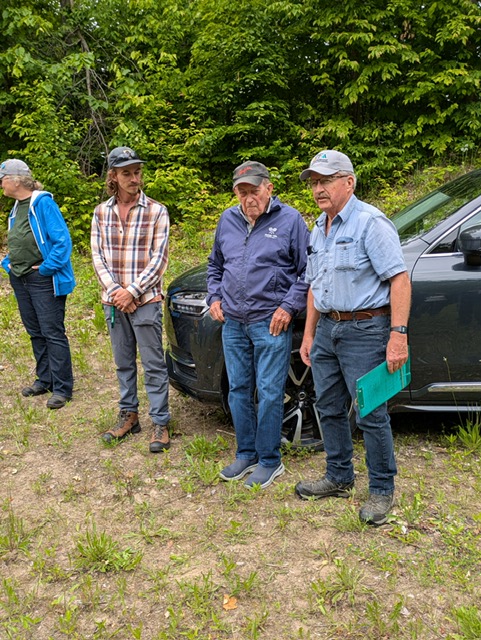
Caroline Mach; James Somerville; John Thompson; Greg Gree
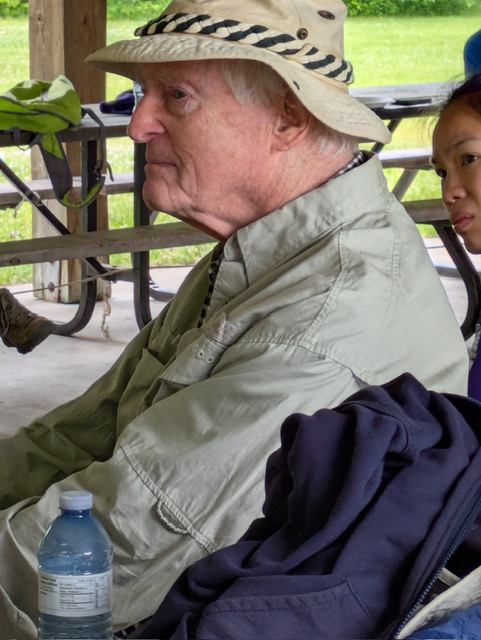
Ken Reese
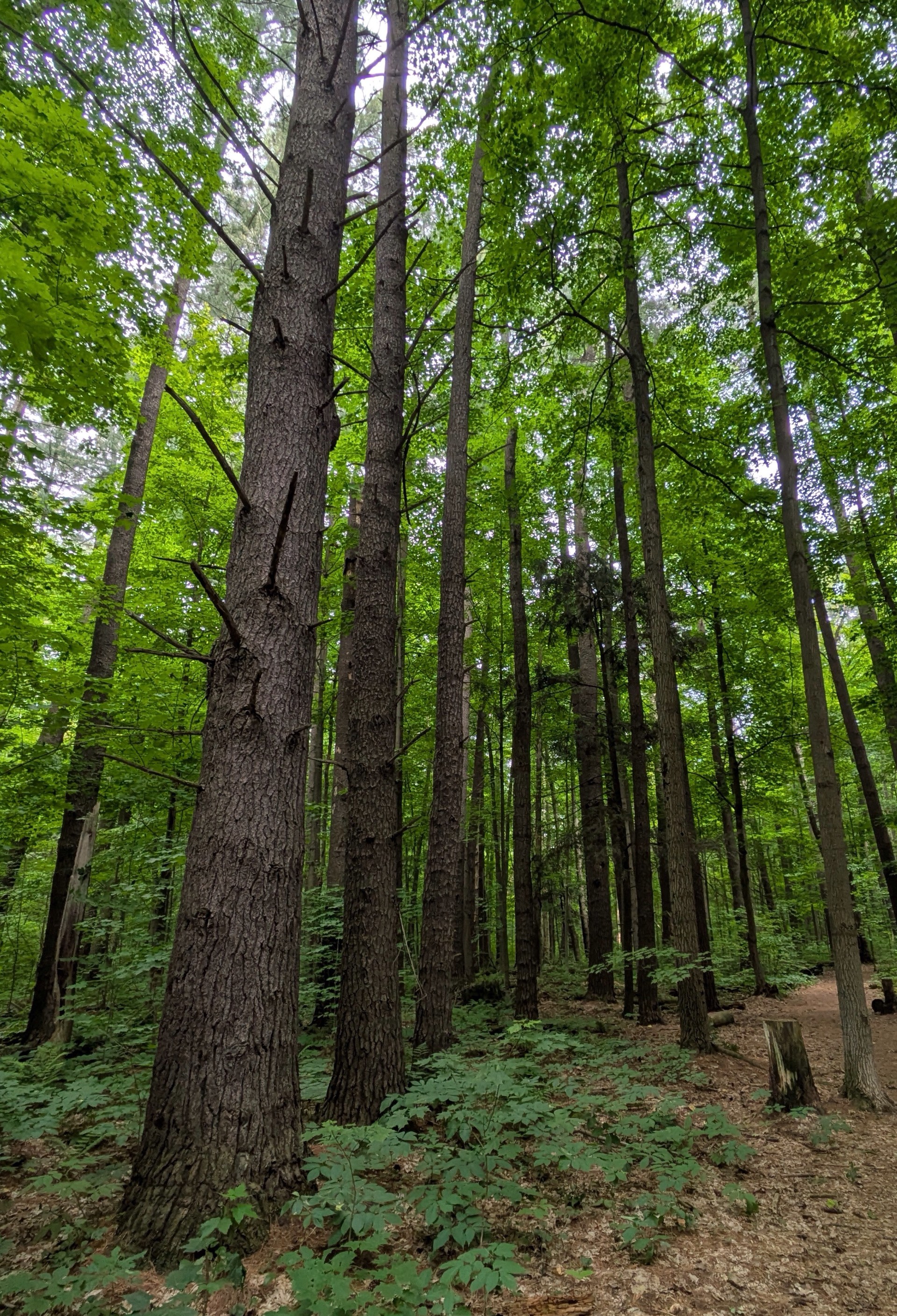
Beattie News

Graeme Davis (Simcoe County Forester)
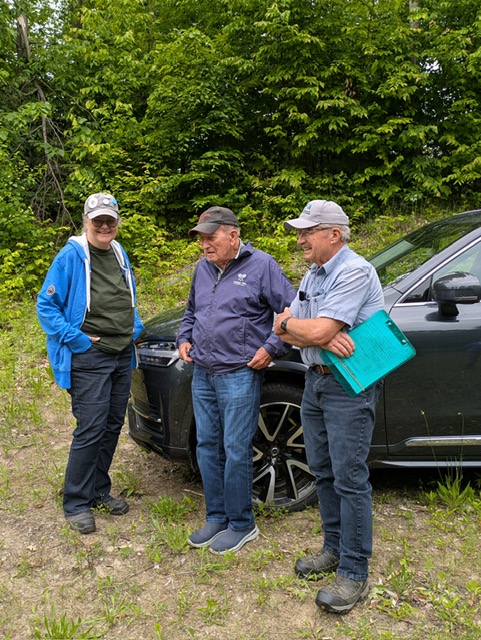
Caroline Mach, John Thompson, Greg Greer
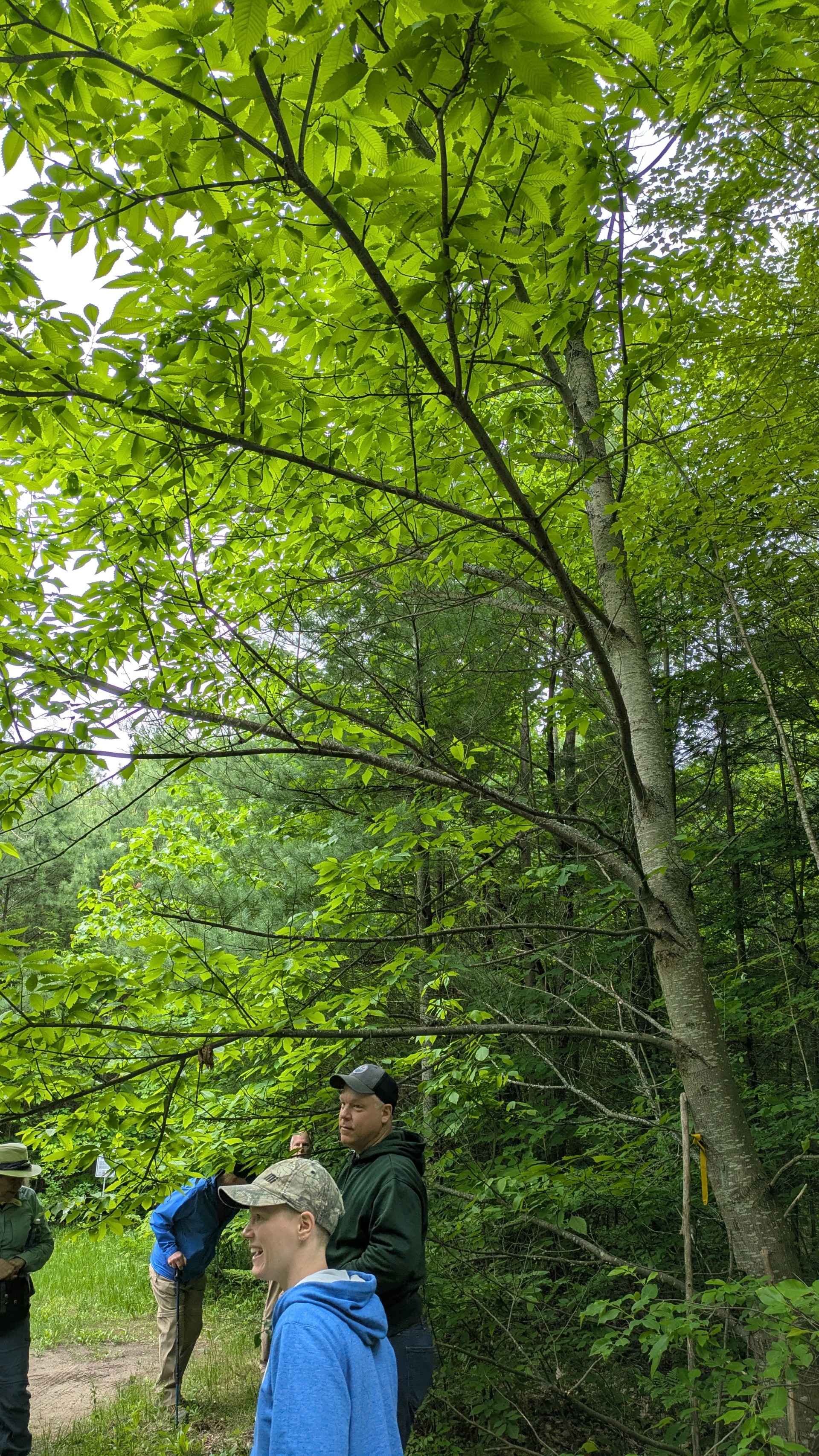
Native Chestnut
By Dave Lemkay
On a warm sunny day, May 28th, conference members of the Ontario Woodlot Association (OWA) and delegates from over 30 countries to the International Model Forest Global Forum enjoyed a boat cruise on the Gatineau and Ottawa Rivers. One of many events in the week-long agenda, the afternoon river cruise followed a morning tour to the Dominion Arboretum at the Central Experimental Farm.
Passengers were initially greeted at the Gatineau wharf by Town Crier, Daniel Richer, with an official welcome and a proclamation of the group’s presence on traditional, unceded territory of the Anishinaabe (Algonquin) people. It was explained that the Ottawa River, also known as the La Grande Rivière in the time of French explorer Samuel de Champlain, and the Kichi-sibi to the Algonquins, was the historic transportation route for the voyageur fur trade and the rafting of massive, squared timber destined for Britain.
Ottawa area forester Mike Rosen resourcefully addressed the visitors as the boat navigated up-stream on the Ottawa. He outlined the significance of the Ottawa River and its many tributaries during two centuries of transporting massive timber harvested from the Algonquin and Laurentian highlands. He identified landmarks on the Ontario and Quebec shore, including Rideau Falls, the Rideau Canal, a UNESCO World Heritage Site, the Canadian Parliament and other significant government buildings and foreign embassies.
Another element of forest heritage was delivered by way of music and song of the timber shanty and riverdrive life by Ottawa Valley master fiddler Dean Lapierre, storyteller/guitarist Gillan Rutz and songstress Gail Gavan. This trio, whose repertoire is deeply rooted in forest lore, livened up the crowd with vibrant renderings of traditional and contemporary music. Gail Gavan’s exuberant presence was a big hit with the predominately Spanish-speaking crowd, with a spirited version of ”La Bamba” that had everyone enthusiastically swaying and dancing on the deck. Gail recruited a tall lad from Bogota, Colombia, Pablo, to play the bongo drums. To quote Gail, “ As a teacher, I like including as many people as possible during an event because those are the little things they may never forget!”
She went on to say “of course, Pablo, on the bongos was a star!” He said, ‘You gave me confidence to play. I may take up drumming when I go home.’ She added, “That is what makes life special.”
Pieter Lienhoots, organizer of the river cruise segment of the program, thanked the foursome, Town Crier, Daniel Richer, Mike Rosen, Gillan Rutz, Dean Lapierre and Gail Gavan and this writer. Dorothy Hamilton of the OWA presented each with a special gift, precipitating a boisterous round of applause.

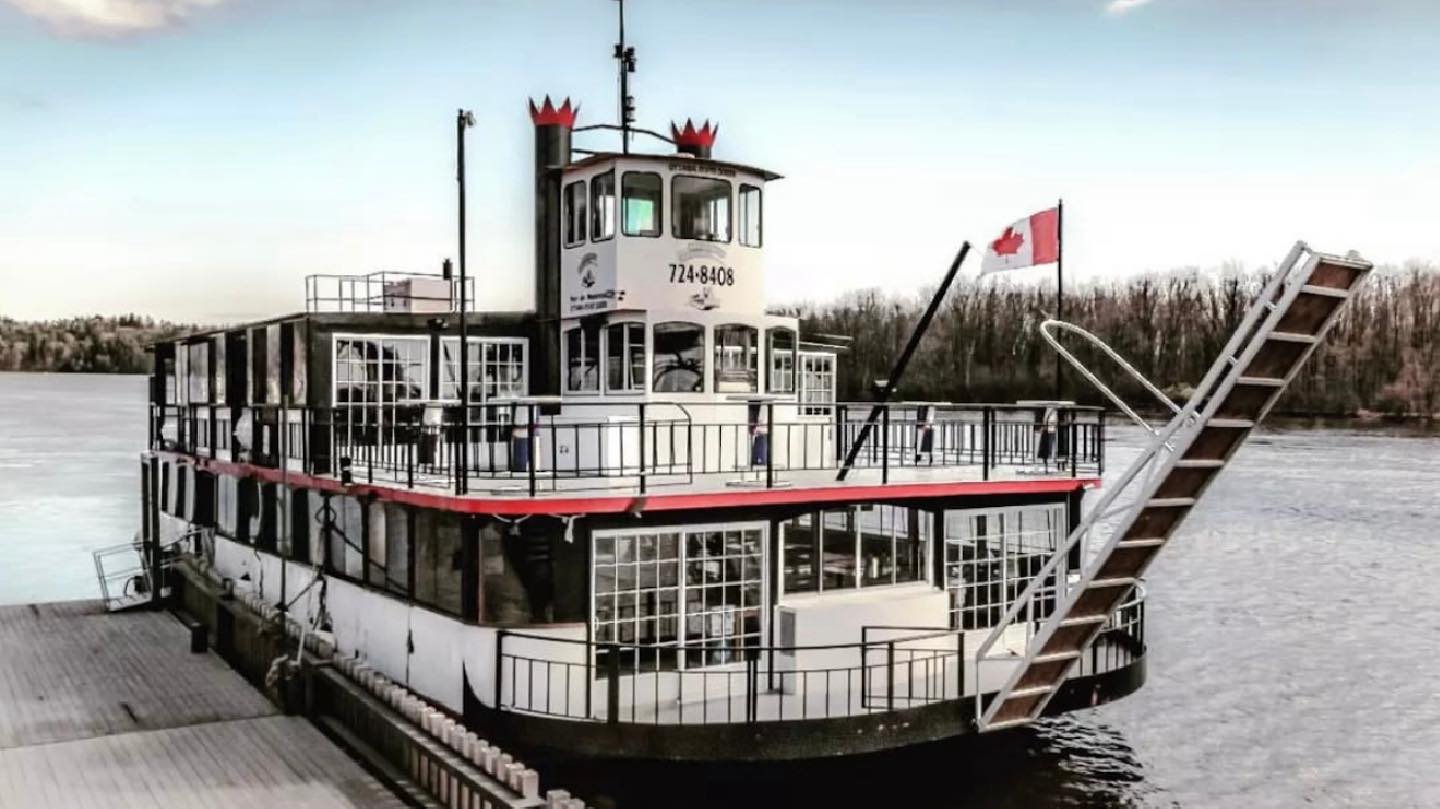
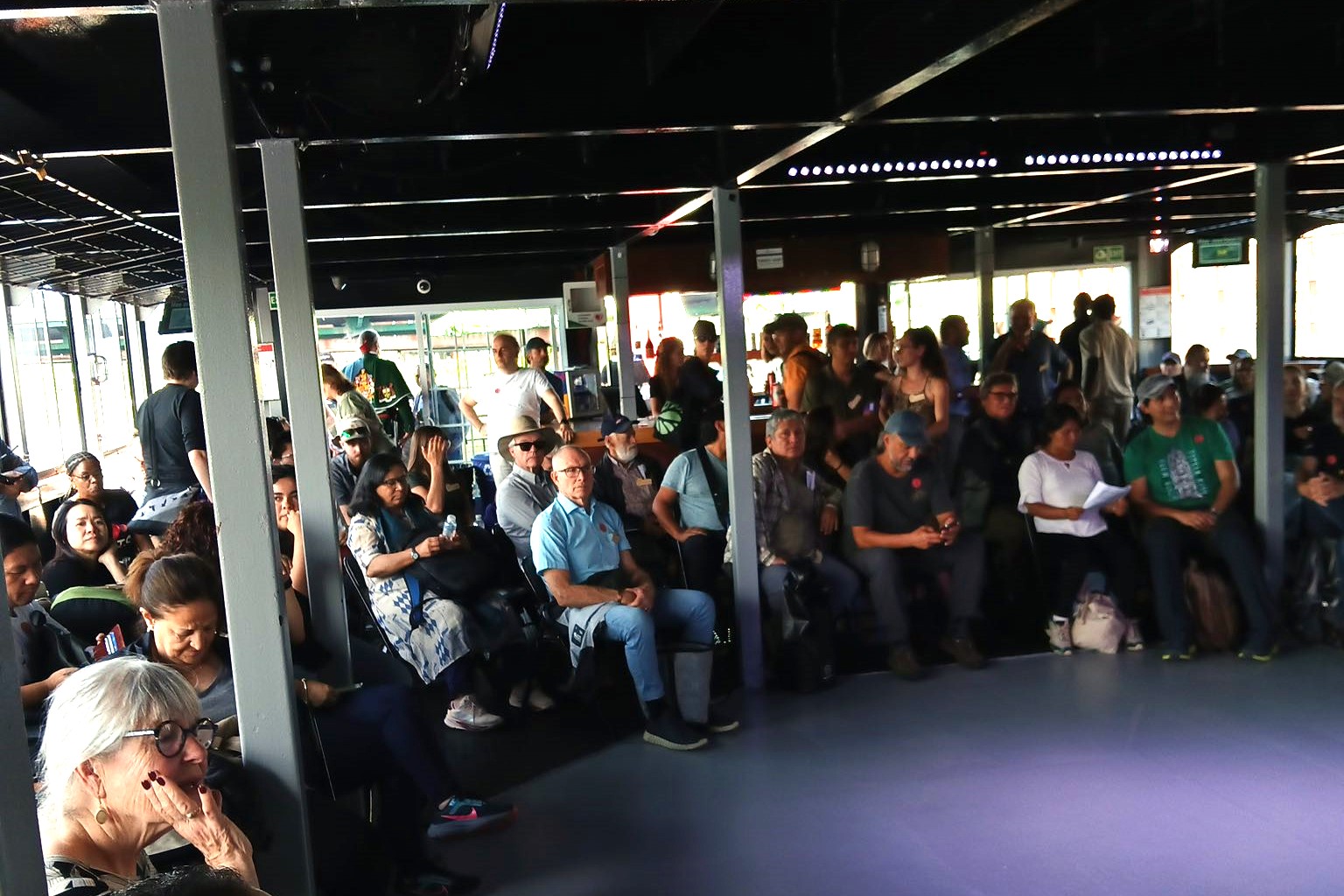
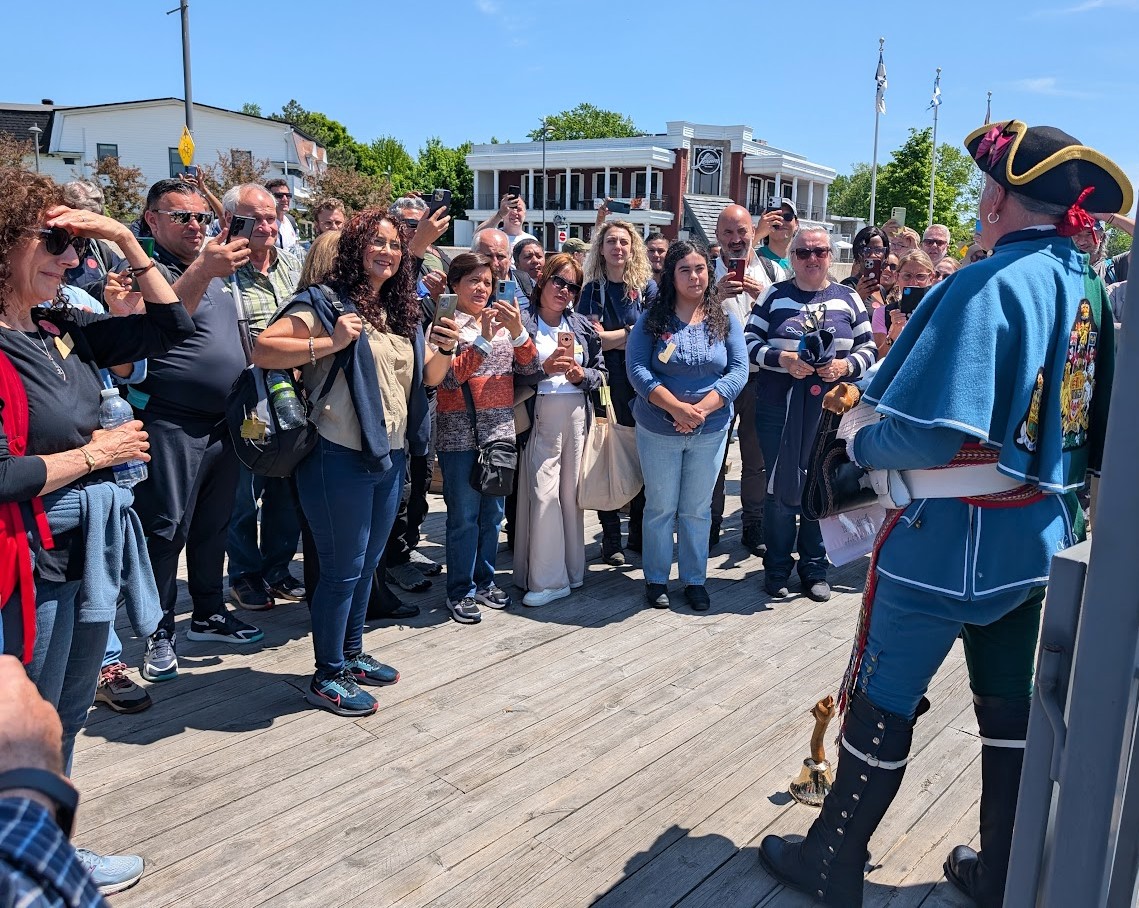
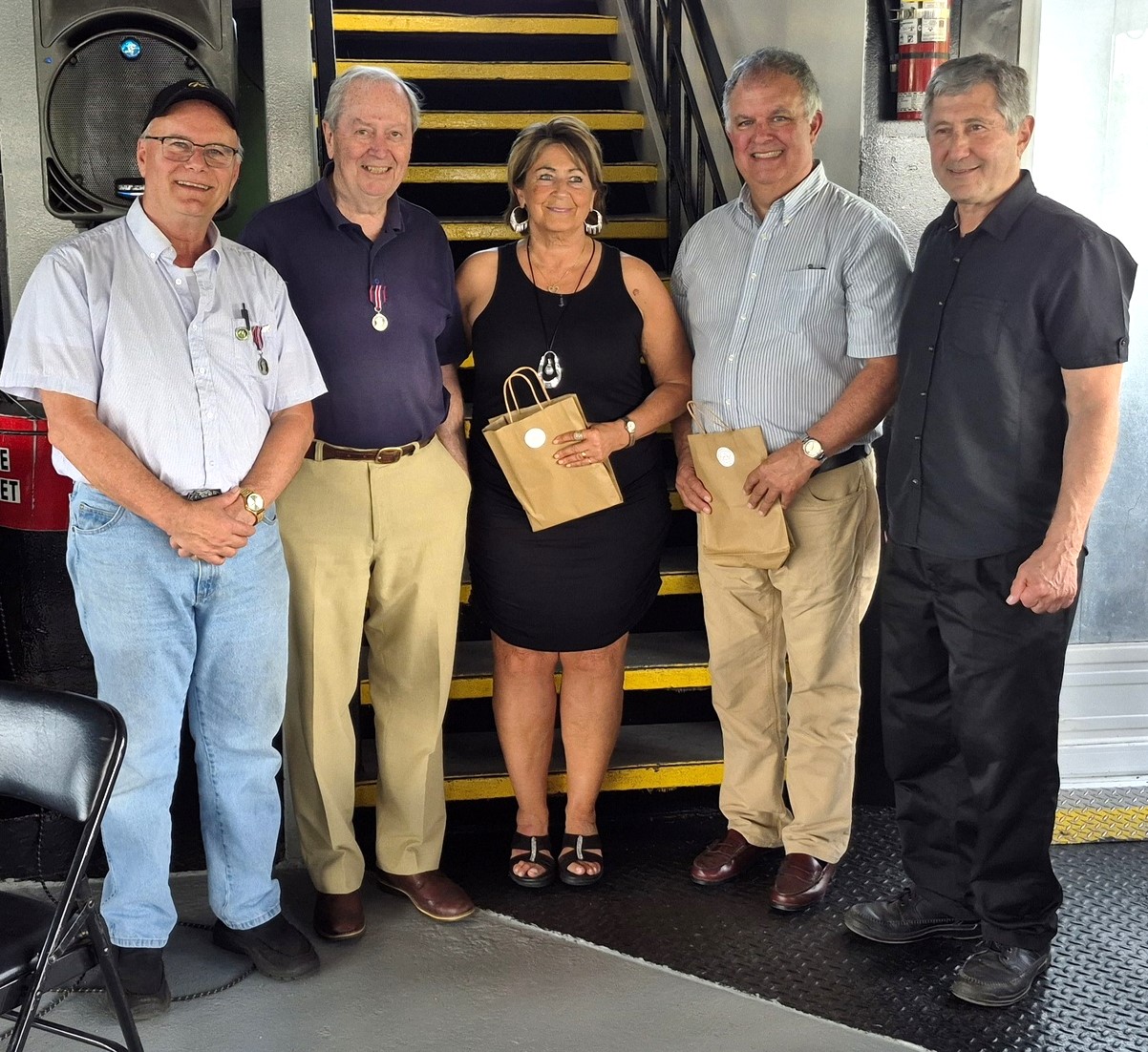
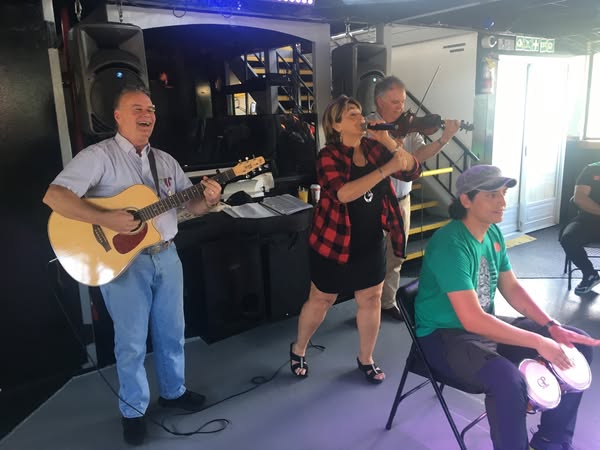

Forest History Ontario (FHO) was delighted to accept a generous invitation to attend the Ontario Forest Industries Association (OFIA) annual Convention in Toronto and was well represented by Chair, Jim Farrell, Vice-Chair Faye Johnson and Director Mike Willick. This 82nd Annual Convention was by any measure an outstanding success in terms of attendance (well over 200 for the April 29th Reception and the April 30th convention. On top of that, the Ontario legislature was very well represented by Premier Ford, six cabinet Ministers ( I hope my count is right on this) and a number of MPPs and Parliamentary Assistants. Premier Ford worked the room shaking hands with all attendees and some of the serving staff as well. The Reception was held at Limberlost Place, a spectacular mass timber building at the George Brown College Waterfront Campus, which the Premier was shown as a very attractive design and building option.
The following day was hosted at 1 King West (corner of King and Younge Streets) which is now hotel and residential space but has deep historic roots going back to 1879 when the Dominion Bank bought the property and established its Head Office. In 1914 a major expansion was built to create a 12-story bank tower that was referred to as a skyscraper at the time. Through various mergers the bank became the Toronto-Dominion Bank, and the property was redeveloped again in 2006 but carefully preserved and restored much of the original 12 story building. The "Banking Hall" pictured above, was a perfect place for the Convention with massive marble arches, soring ceiling and a palpable sense of history.
I was particularly delighted to see that their latest magazine, Field Notes, includes an article I wrote for them last fall that provided an overview of FHO activities in 2024. OFIA is a generous supporter of FHO and their contribution to our work is most appreciated.
See more on the Convention Program in the attached
Jim Farrell, Chair
OFIA Annual Convention Program - OFIA

Read Field Notes, the OFIA Magazine which includes an FHO Update
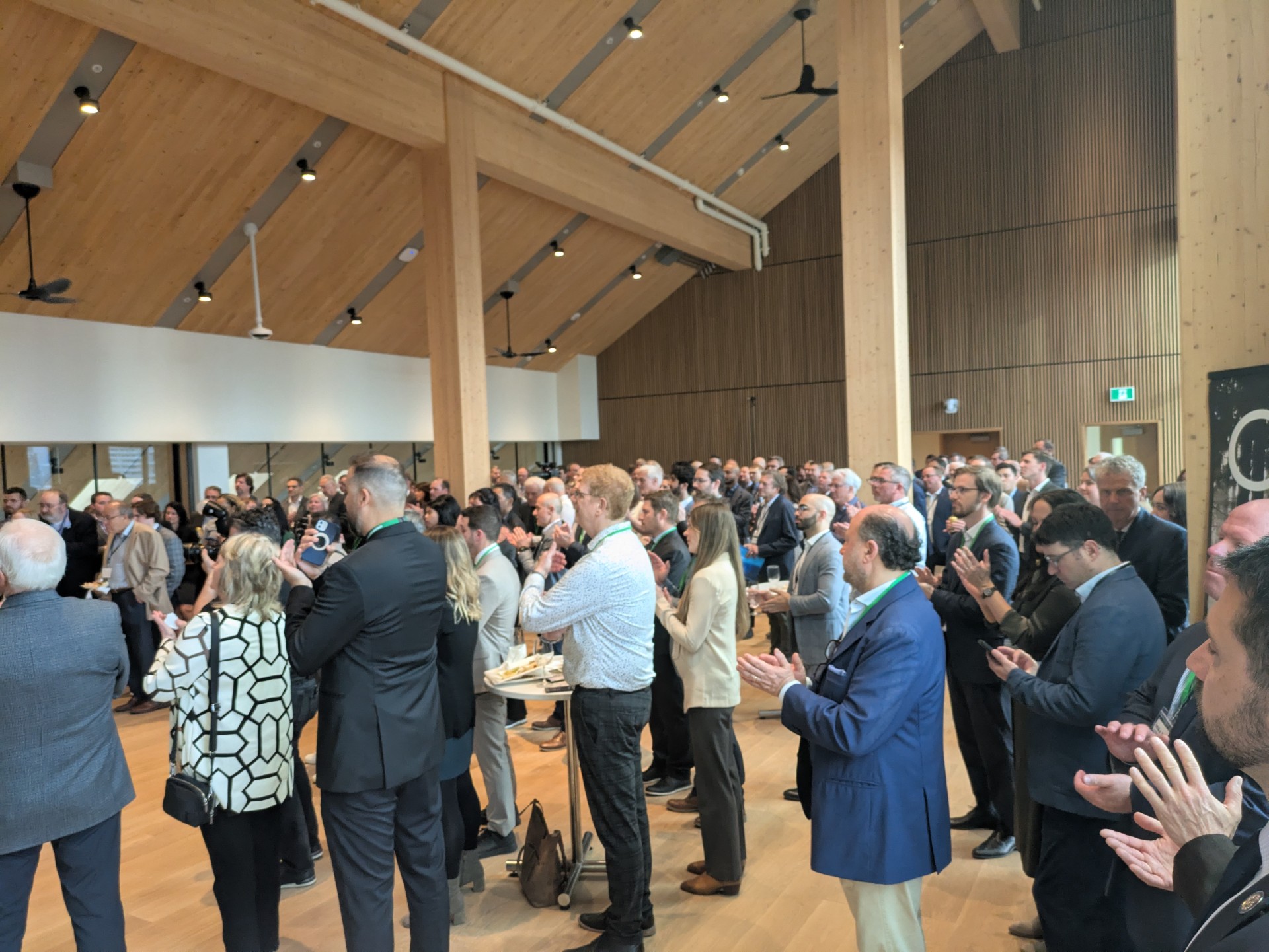
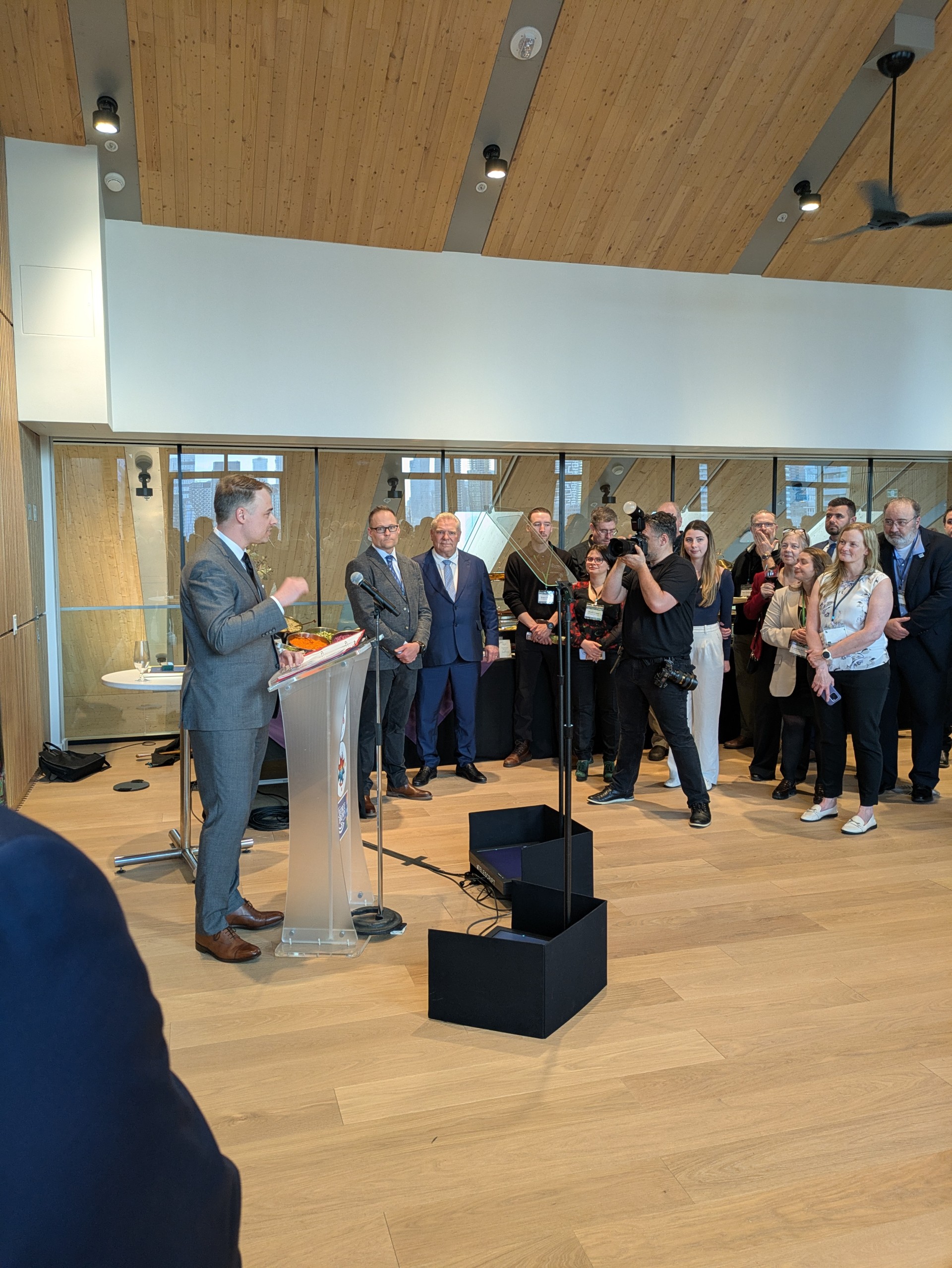
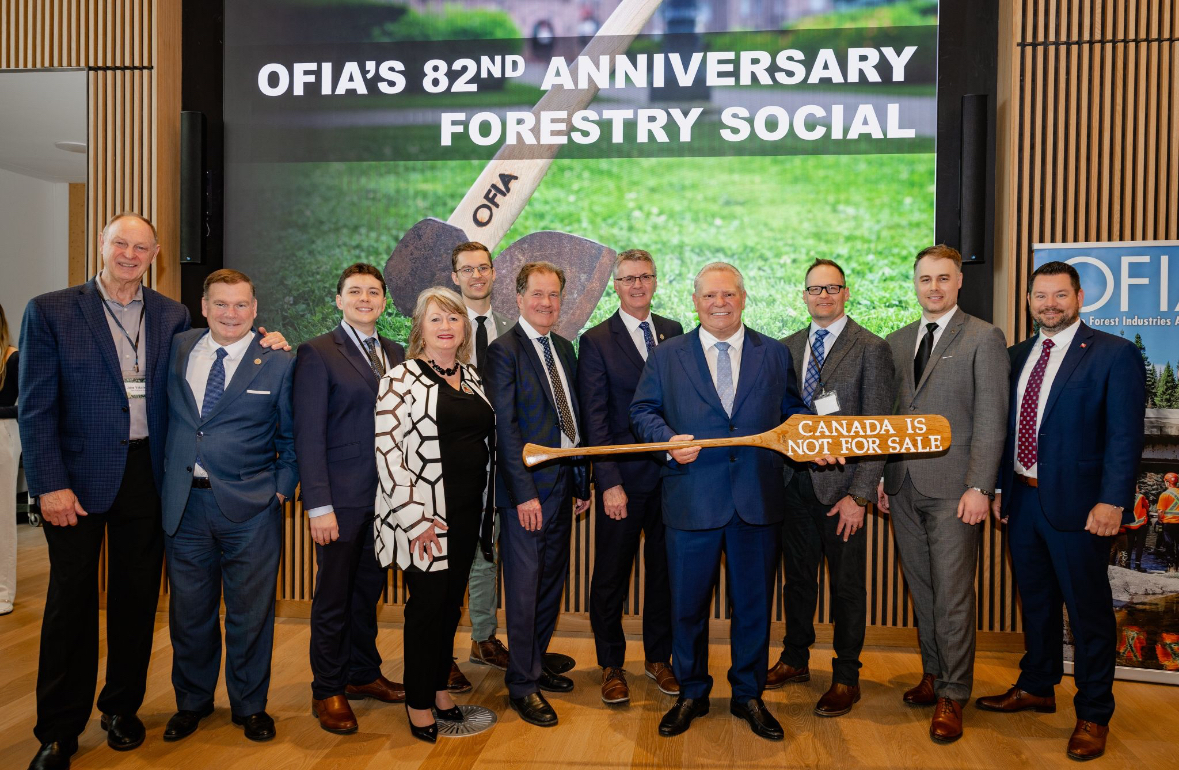
ForestsCanada hosted their first forest conference under their new name and mandate suitably titled The Forestry Conference on February 19th-20th, 2025 in Toronto. It was a very jam-packed day, with a full room of as many as 400 attendees, and the Forest History Ontario moderated session was held just after lunch and started and ended on time. The armchair chat was moderated by FHO Chair Jim Farrell and included 2 panelists Caroline Mach, recently retired Dufferin County Forester and Lacey Rose, Renfrew County Forester (both dedicated FHO members). The theme was celebrating 10 years of Women in Wood a grass root s network of women supporting women who work in, with and for the woods. It is hugely successful, and credit needs to be given to Lacey Rose and Jess Kaknevicius (CEO ForestsCanada) for getting it stated 10 years ago. The format was a brief introduction by Jim and then questions posed to each of the panelists on their experiences of being a woman in forestry ...'then and now' with a rolling presentation of pictures of women working in the woods. The first few questions were prepared but with the benefit of a Q&A app called Slido the audience was able to post questions that I, remarkably, picked up on my phone and posed to the speakers. It worked out very well with far more questions than time to answer them. After the session I presented each speaker with a copy of 'A History of Forestry in Canada' by Gilbert Paille.
FHO was also well represented by Terry Schwan who organized, managed and staffed a very popular used 'book store' selling a range of forest and environmental related books with the proceeds going to the Frank MacDougall Memorial Fund. Terry was well 'backed' with the coming out party for our new banner and was able to distribute copies of our new pamphlet. Thank you, Terry.
It was a very successful session, and I am personally very grateful to Jess and ForestsCanada Team for inviting us and supporting us so consistently and graciously.
Congratulations Women in Wood on your first 10 years of history.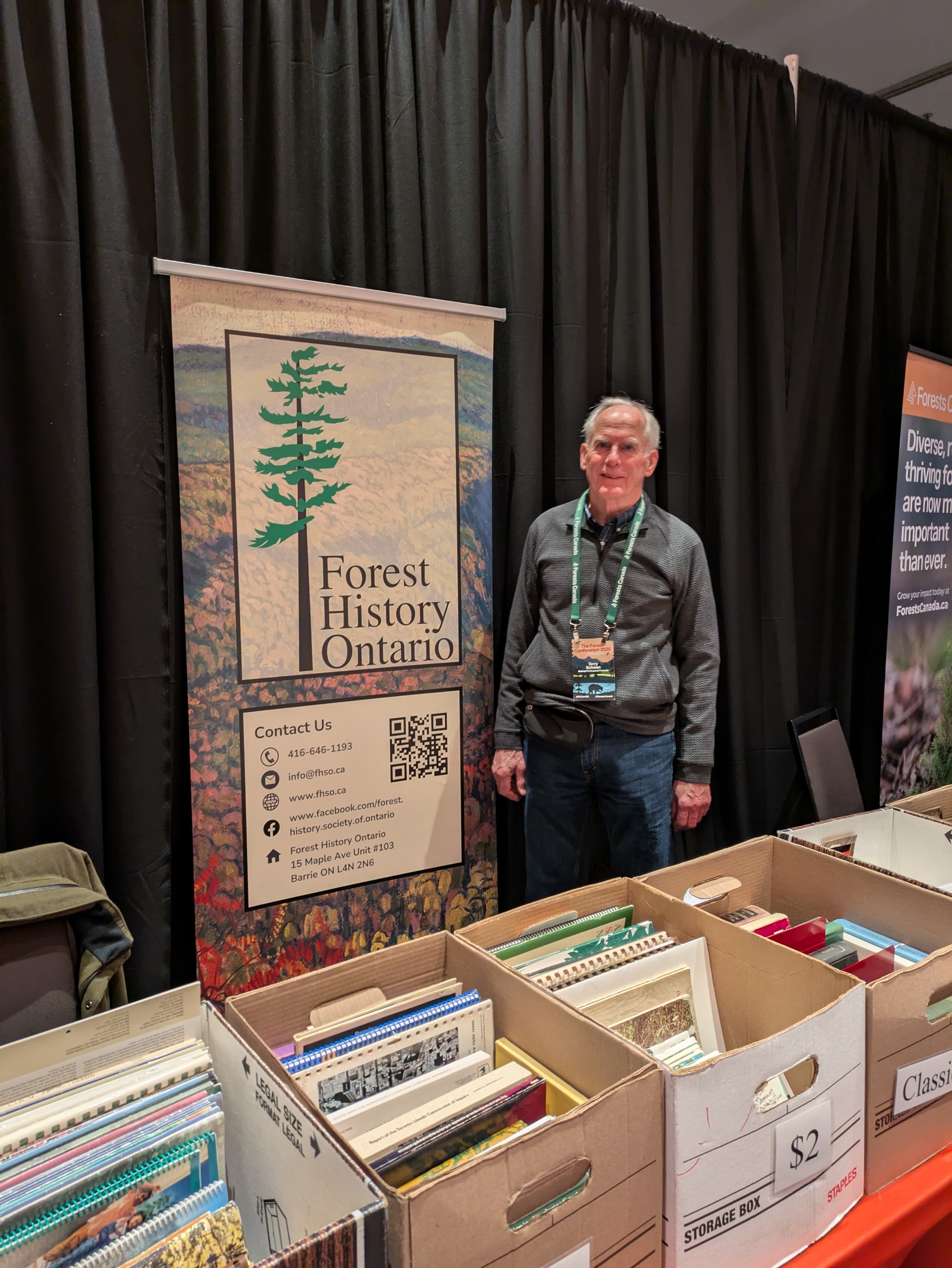
Terry Schwan at booth (above)
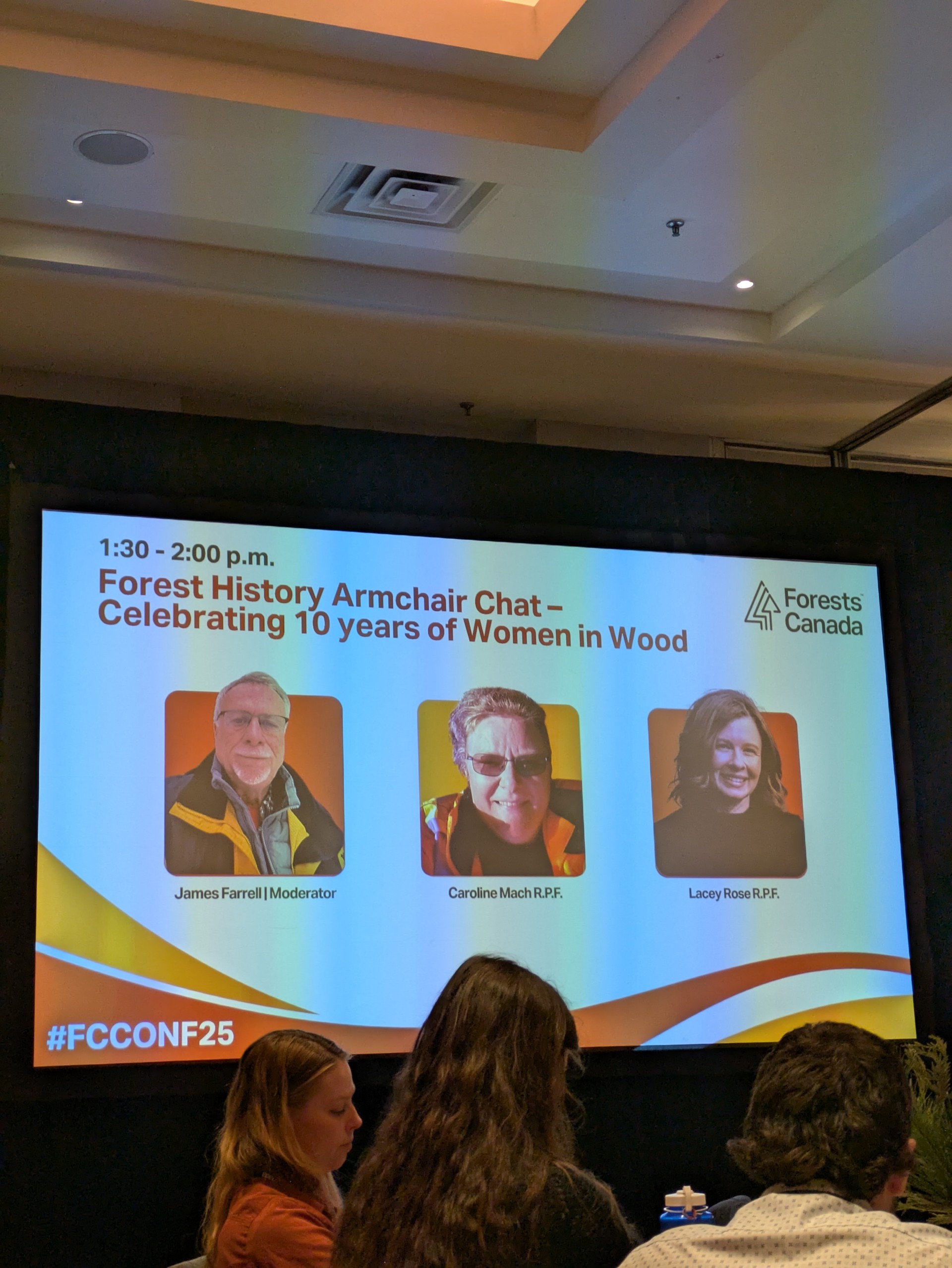
Forest History Panel (above)
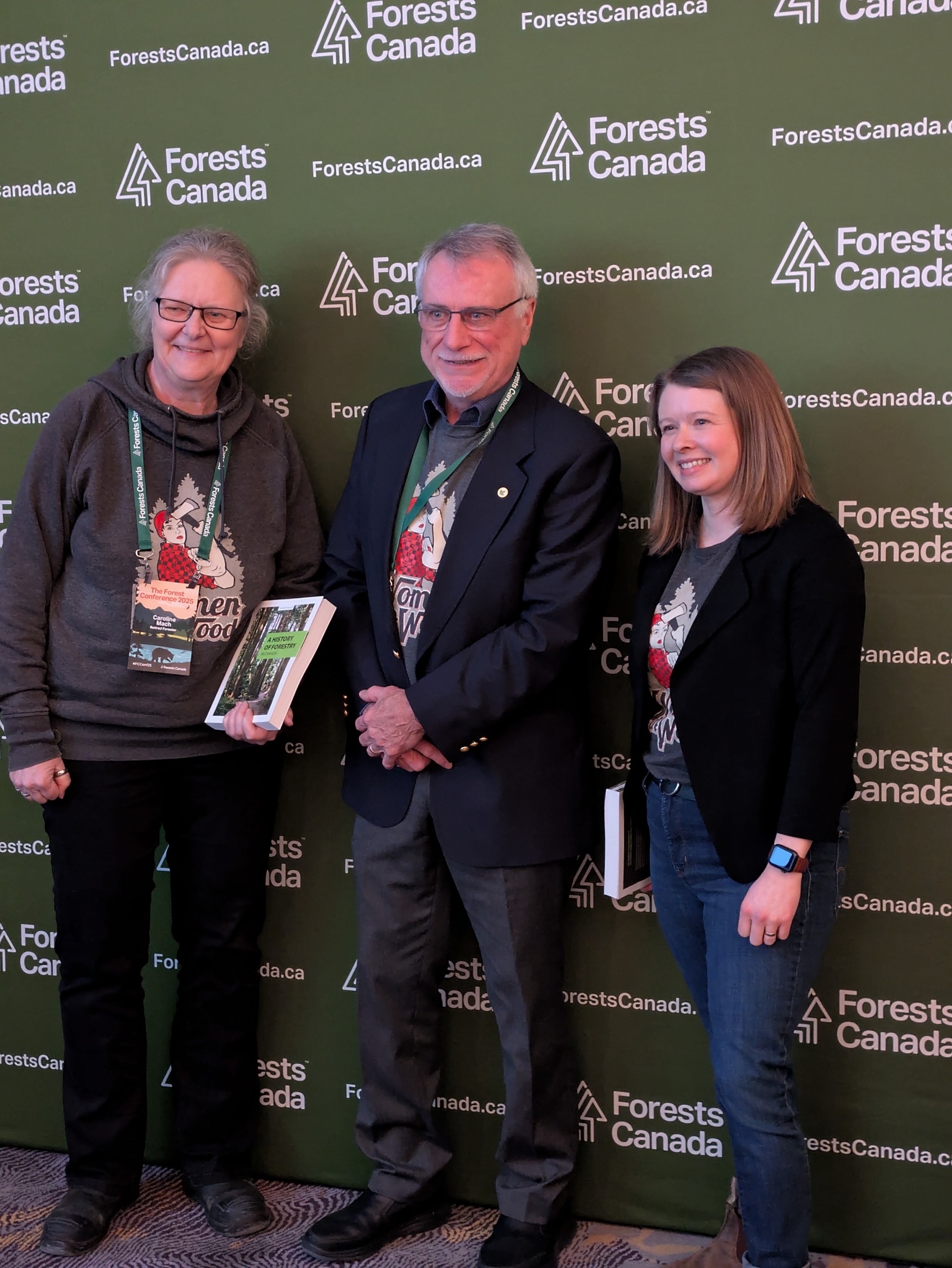
Caroline Mach, Jim Farrell, and Lacey Rose (above)
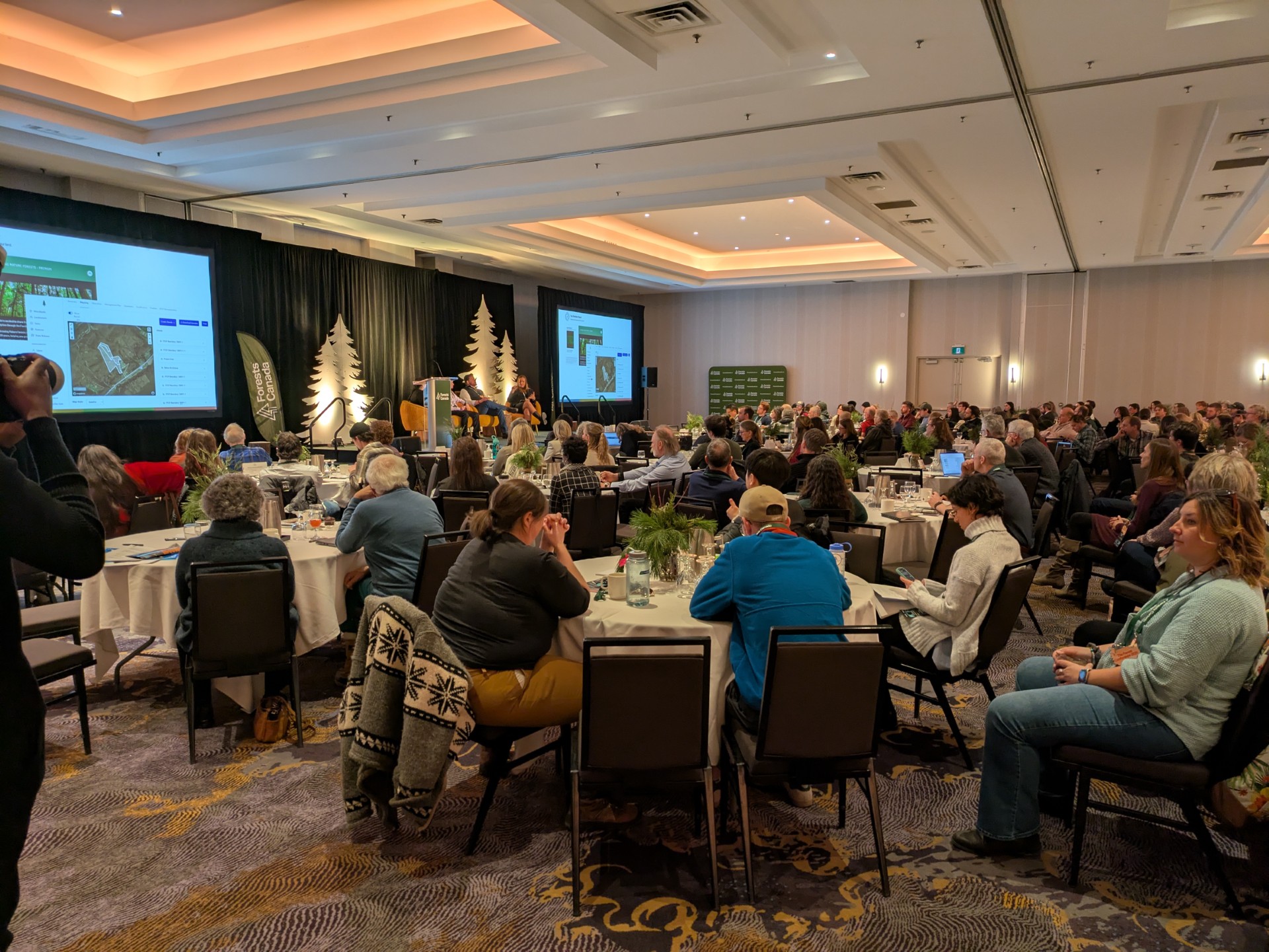
Conference crowd
